[First off: apologies for a lack of new blogs to read during January – I’ve had my head down getting the accounts in, doing a few pre-weds and a spot bit of business spring cleaning. There’s plenty material in the pipes for you guys, so cheers as ever for reading the BAWP blog!]
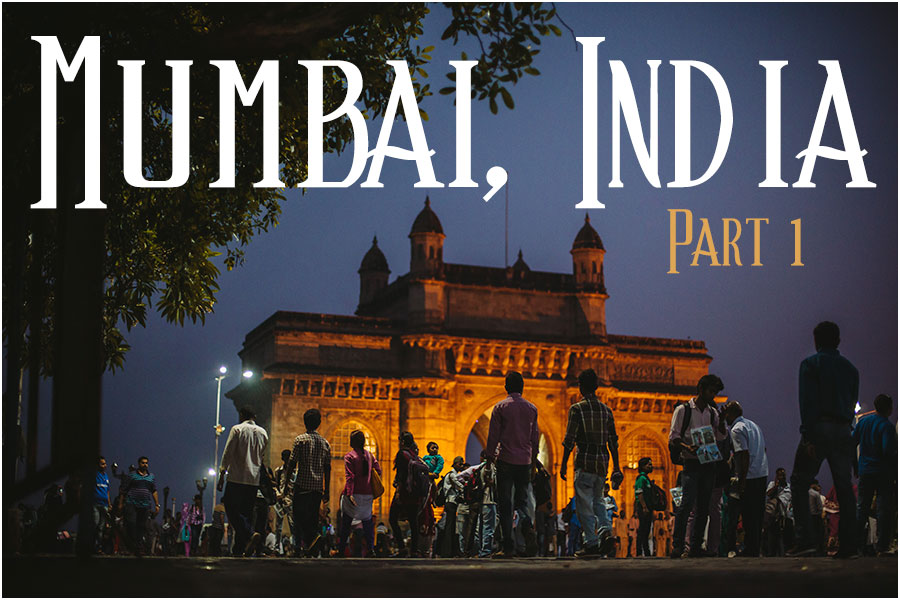
So – In November last year I was lucky enough to be flown to India to photograph a wedding in Mumbai & Goa! Not only that, but I flew out early and took five days to hang out, settle in and explore Mumbai before the wedding proceedings kicked off. [Major perk of the job, eh?!]
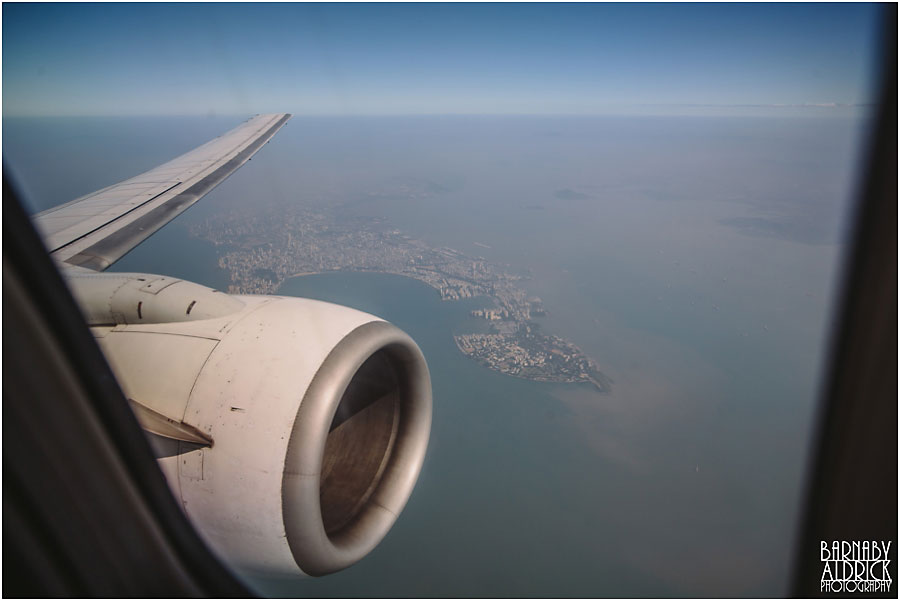
I do love to travel! It’s so inspiring. Framing fresh, new sights through a lens is a magical thing – for me it helps me study the detail – the essence – of a place, and make sense of both what’s in front of me. On last count I’ve visited over 50 countries and, in my experience, the most interesting places to me are those with a significantly different culture from home. In the UK (and most of the less sunny parts of the developed West), I’ve always felt the cultural doings of life are tempered from public view, sheltered from bad weather and hidden from public scrutiny, behind closed doors. It can make personal street photography projects hard to get enthused about; especially about things you see every day. As they say, ‘familiarity breeds contempt’. Add to that a growing public suspicion against street photography (pedophile/terrorists love their street shooting) and you’ll see why the home turf elements conspire against photographic inspiration.
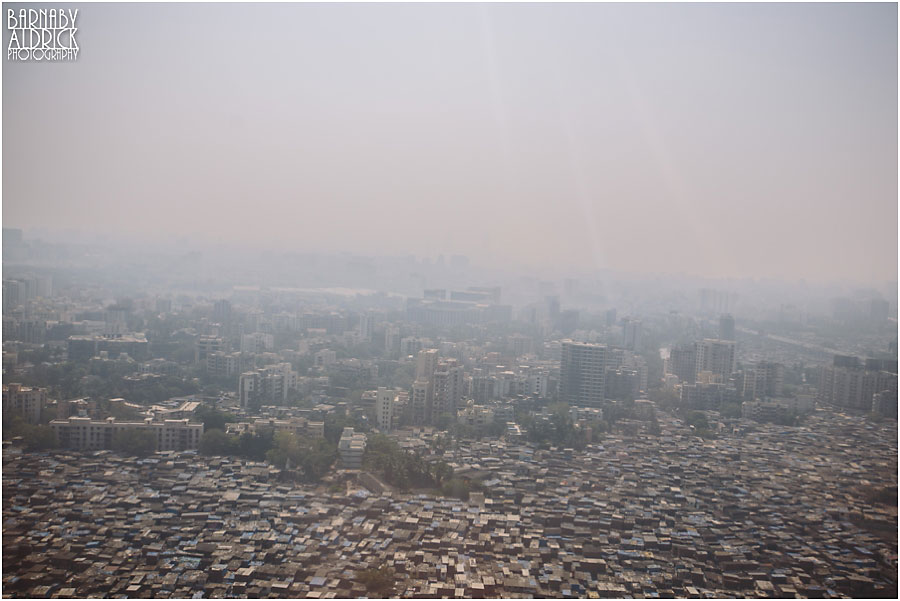
But where temperatures rise and the disparity between rich and poor widens, life is drawn out onto the streets. The difference from home draws the eye and often viscerally assaults the senses. There’s something frame-worthy on and around every corner and capturing it becomes an addictive challenge. Philosophically, it also makes me realize what I have back home, and being forced to deal with more challenging situations, reminds me who I am. Which reminds me of this ace quote from the author of Jurassic Park:
“Often I feel I go to some distant region of the world to be reminded of who I really am. There is no mystery about why this should be so. Stripped of your ordinary surroundings, your friends, your daily routines, your refrigerator full of your food, your closet full of your clothes — with all this taken away, you are forced into direct experience. Such direct experience inevitably makes you aware of who it is that is having the experience. That’s not always comfortable, but it is always invigorating.”
Michael Crichton – ‘Travels’
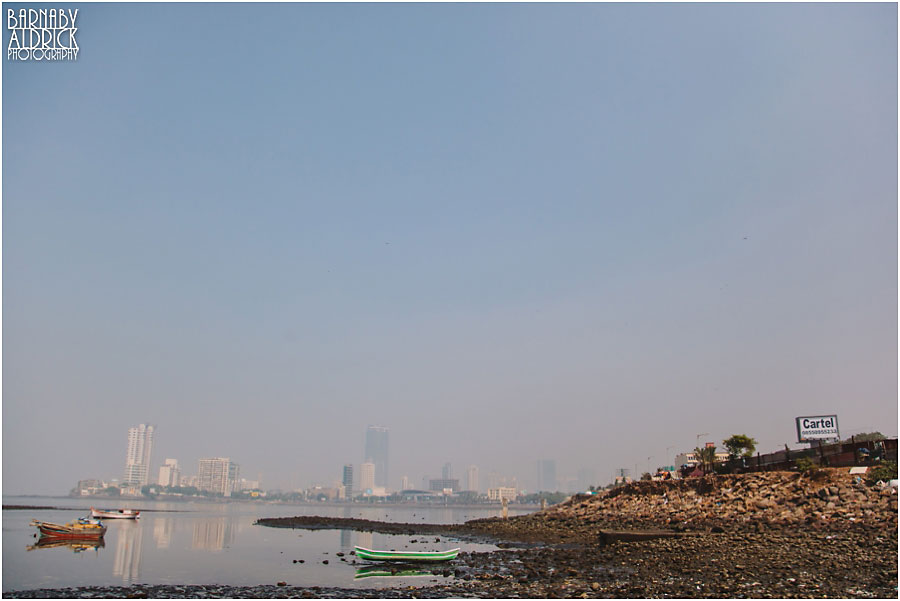
[ Nice to see the Cartel is recruiting 😉 ]
I first visited India when I was 18, after a stint volunteering in a spinal injuries centre in Bangladesh. I was gung-ho for adventure and relished every exciting detail of Asia. I loved its heady blend of drama and chaos, and how things rarely happen when or like you’d expect. In some ways, the experience shaped who I’ve become. The hardships and pleasures of travel taught me a patience, an acceptance that things can often be worse; the ability to look on even bad situations with humour. I felt the experience left me with a world-wise confidence to help me take things on in-spite of risk, and is possibly one of the reasons I’m self-employed in the position I am today.
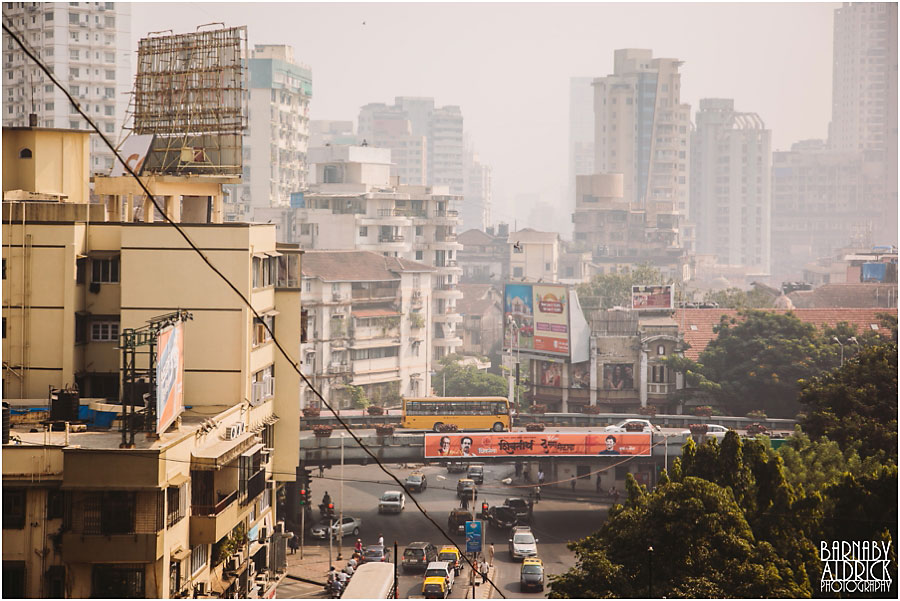
I wondered how it would feel returning to India fifteen years later. On a visual level, my first impression was that although everyone now had a mobile phone, very little appeared to have changed. Before I’d even got to the hotel, the luggage conveyor broke and it took half the terminal staff to work out what to do; my luggage trolly gave me powerful electric shocks and the lift I was expecting arrived half an hour late. Then on the life threatening night drive to the hotel through a barrage of endless horns, I noticed over half the traffic (including my vehicle) weren’t bothering to use their headlights! You’ve just got to smile and settle into it – let the chaos wash over you.
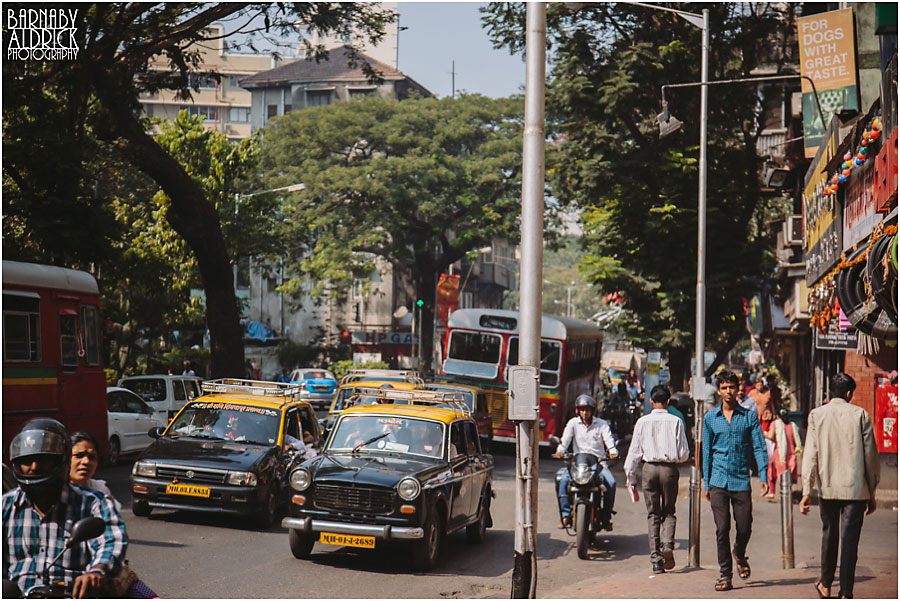
To get the maximum out of a country like India, you need to be the hindu cow, wandering serenely in 6 lanes of busy traffic. Cow’s are holy.
Hardly anyone ever hits a cow… Or at least they seem to avoid them. Most of the time.
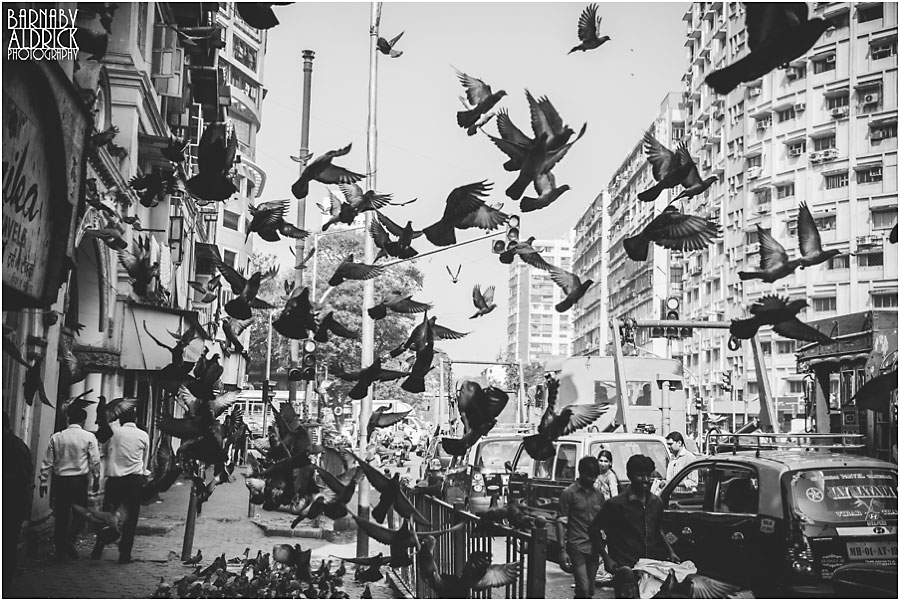
So – once I’d settled in and given up trying to figure the functions held by the comic sea of switches in my hotel room, I took to the streets to see what there was to see.
Mumbai is the Indian name for what the British Raj called Bombay. Though most of the people I spoke to there, of all ages, still call it Bombay.
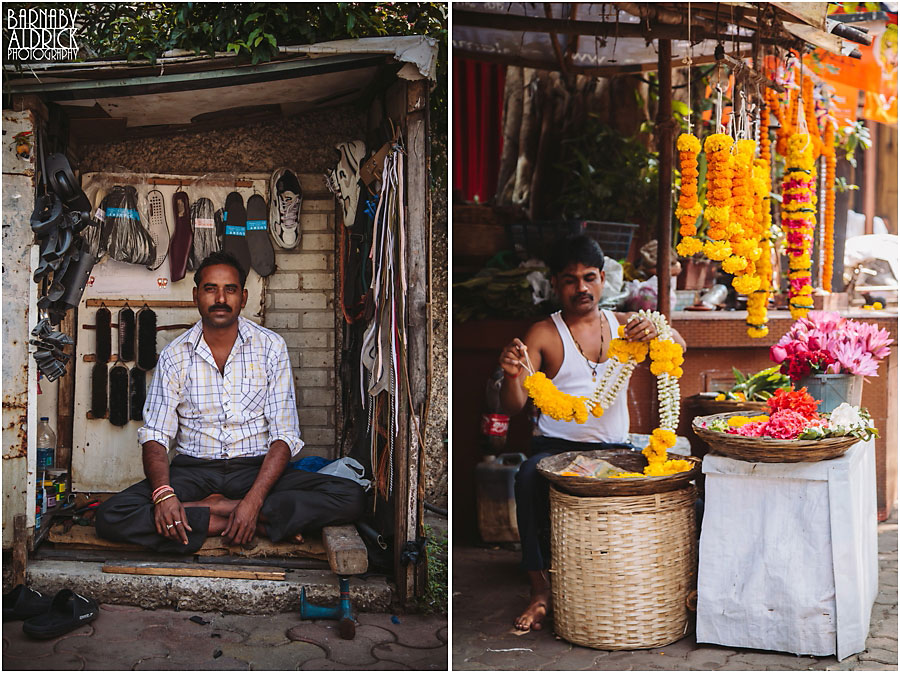
For the shutterbugs out there, I started out with just my trusty travel setup – the old Canon 5DmkII (my backup for the trip) the 24-105mm f4 lens (too slow in aperture for low light wedding work, but a great all-rounder for travel) and the manual 45mm tilt-shift lens, for creative placement of depth of field. I usually test the water with these two lenses & an older body, just in case it’s SKETCHY AS, and I get taxed. You never know how things are going to be until you’ve ventured out. And the stories of muggings always seem to be the disorientated, fresh off the boat backpackers. I’d have been willing to hand them over in a pinch and not interfere with the wedding in hand.
You can never be too cautious shooting destination weddings. I flew with everything I could need to shoot the wedding in my carry on & a full backup in my checked luggage. Then the main gear was left in the hotel safe, laptop kensington-cabled to the sink and as the RAWs accumulated, a backup copy kept on my person and another on the laptop (with an external HD in the pillow case!) – nothing like a bit of healthy paranoia on a destination job!
Then once I got a feeling for the streets, I started adding in a other options into my bag. Mainly just the 50mm though really I took the 70-200 out one day and hardly used it. I actually love the versatility of the 24-105 for wide, street story tellers as well as professional, portraits with a cheeky depth of field. The 50 ‘wide open’ is gold for portraits and scenes with a razor depth of field. And the 45mm tilt-shift, while a fussy little thing to get right, is a special little performer.
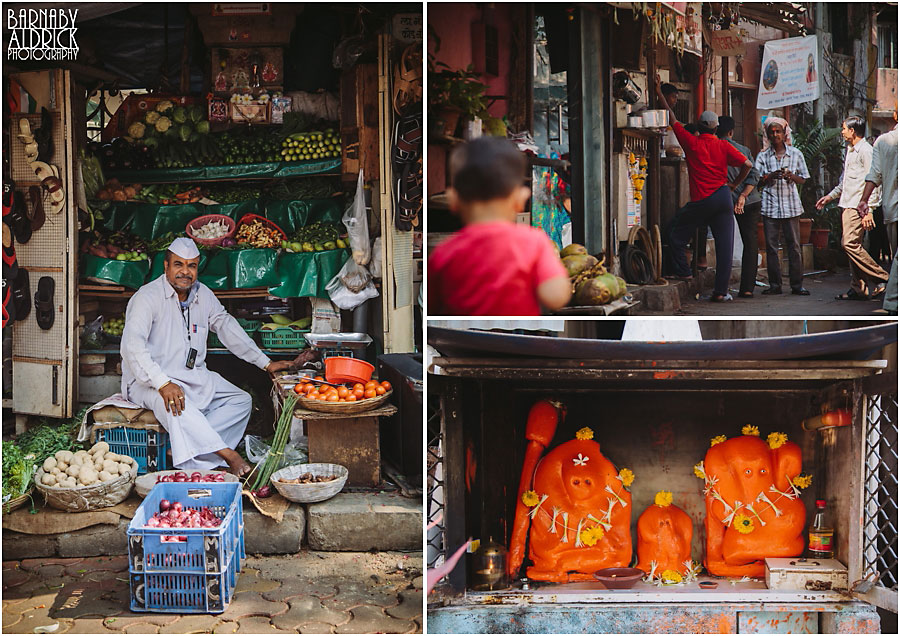
I’m always drawn to people. I love to try and capture something about them and their context – to make a photo more than just a thing with or without a blurry background.
But I don’t like to feel I stole their image without their consent. I like to make eye contact and – if I don’t know the language – gesture for permission. Sometimes it’s granted, sometimes not. Some people understandably don’t want to feel like animals in a zoo for foreigners to snap then show off online. Personally, I don’t like to have to pay for a photograph – unless I feel the desire to give, for example, to a homeless person after taking their photo – not just because I’m a fundamentally a tight northerner, but because demanding money for an image somehow cheapens the image and distorts the tourist economy for the next photographer.
I always think I’d bemusedly let someone on the street take my photograph, if they approached me right.
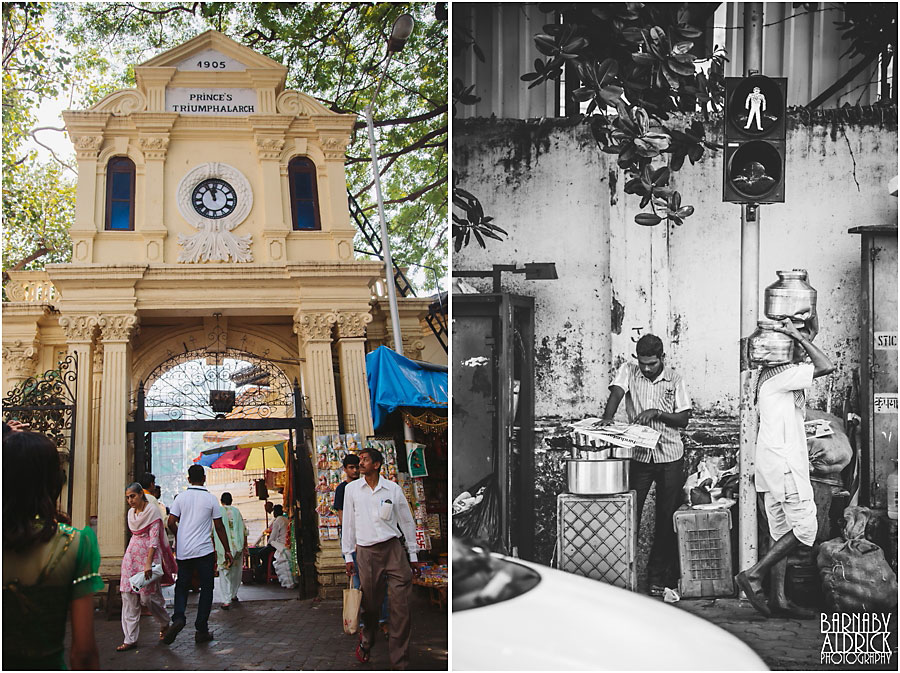
The two kinds of travel/street photography I’m drawn to are capturing beautiful, story-filled scenes & moments and capturing telling portraits of people in a context.
They both require very different skills – one timing, framing and perseverance, and the other bottle & body language…
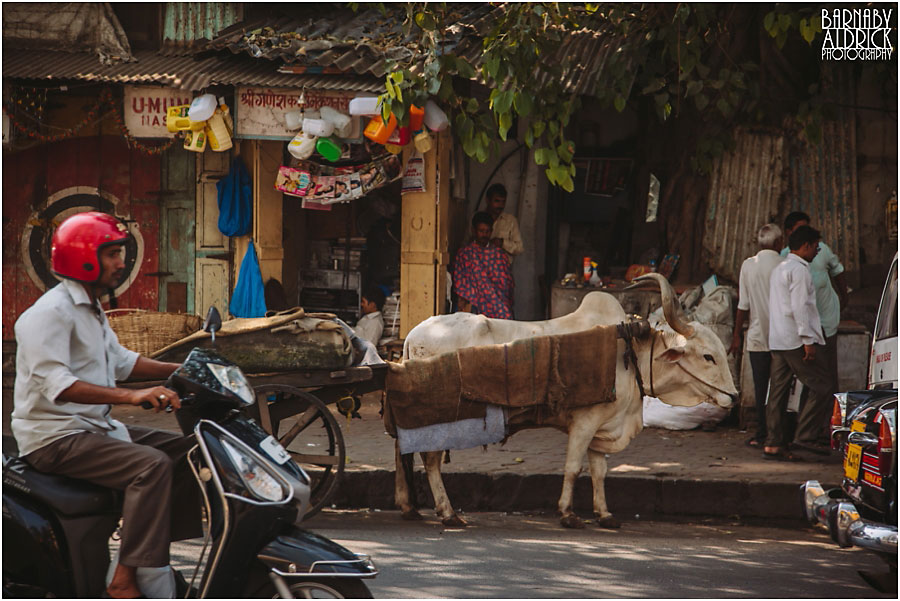
I’m thinking these cows would whip our Friesians in a scrap.
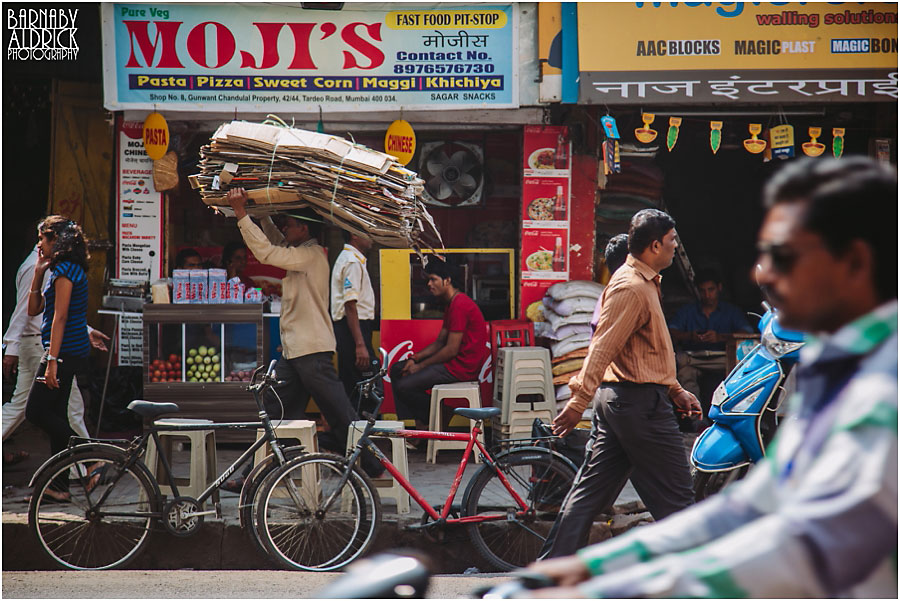
Some travel photographers are genius at both of these. I saw a documentary on inspiring globetrotter Steve McCurry (who I’m looking forward to hearing speak this year), shooting the last rolls of Kodak film produced. I was fascinated by the way he meandered around and bobbed and weaved into people’s space like a passing breeze to steal moments almost unawares. But equally, Steve McCurry has taken my breath away with his, eye-centric window-to-the-soul portraits of the native peoples of this world.
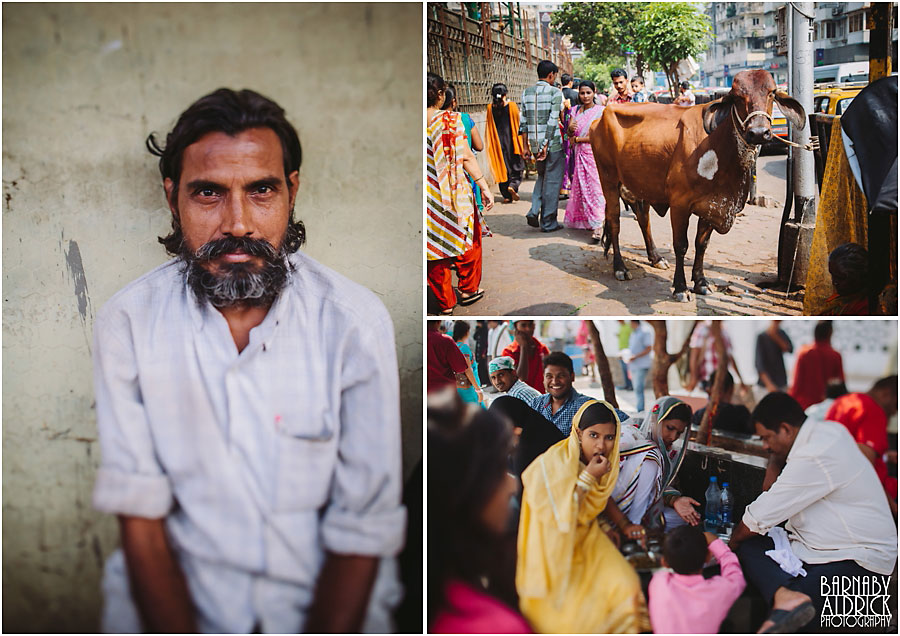
In my experience, when you ask someone for permission, the natural expression and energy can dry up in front of your eyes and you’re faced with photographing confused and potentially suspicious stranger. After visiting Havana (blog here), where most people I asked didn’t want me to take their photograph, I was quite surprised to find nearly ALL the locals of Mumbai were more than happy to let me take their portrait. It may have been that I was drawn to the non-touristy areas, and asking the less obvious people (just the general public and workers going about their business). Surprisingly few even asked for recompense.
I think it takes bottle to ask in the first place, then it becomes about body language. I like to feel that people feel flattered and a little amused to have been asked, so once granted, before the beans turn bitter, I try and ride that energy and see what I can capture.
However, a peculiar Indian trait, is that as smily as a subject is, as soon as the camera is raised, near everyone threw me their most serious face!
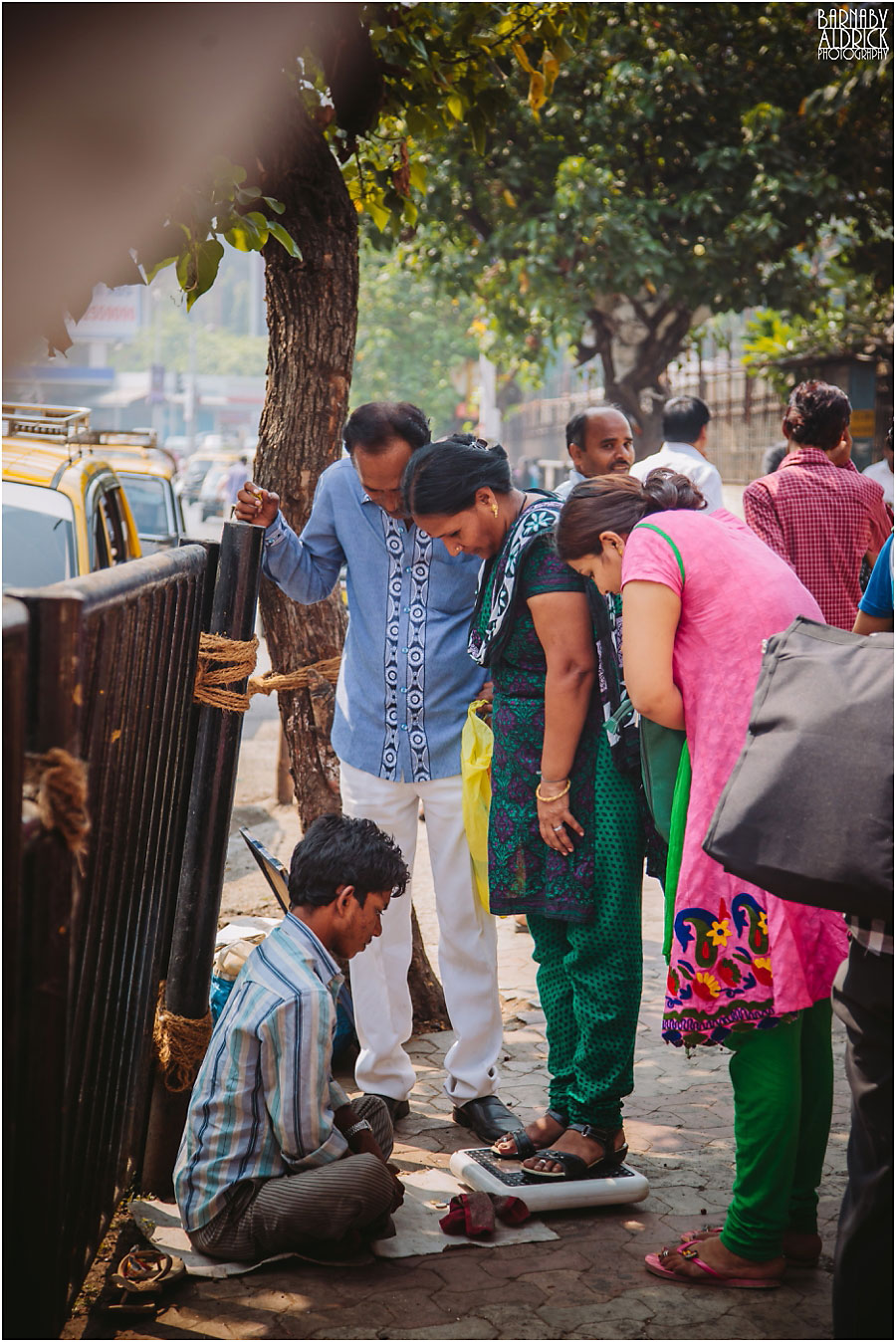
This was a street scene that amused me! People actually weighing themselves in public. Fully dressed.
As you do.
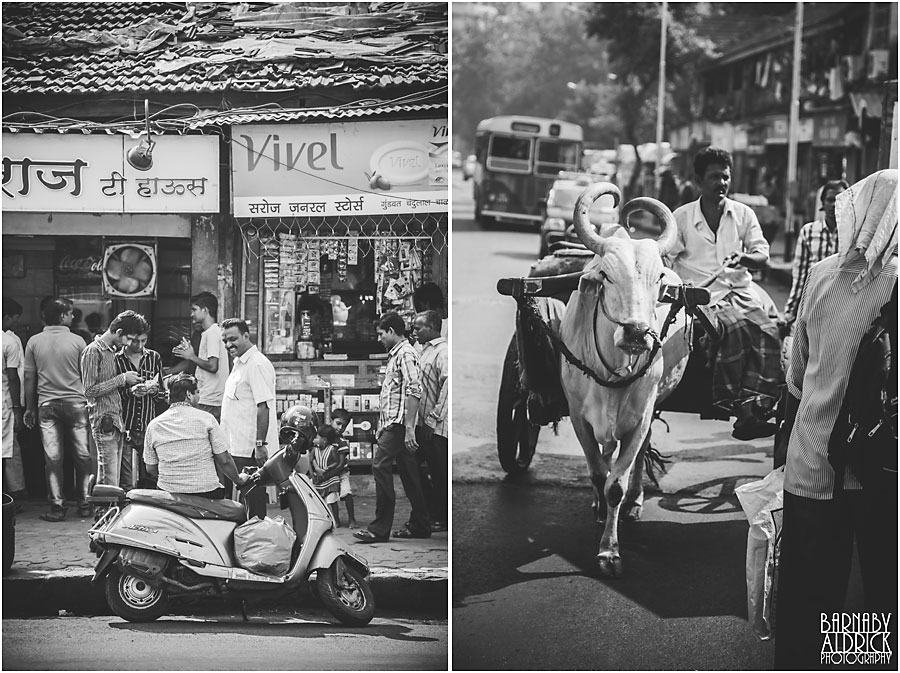
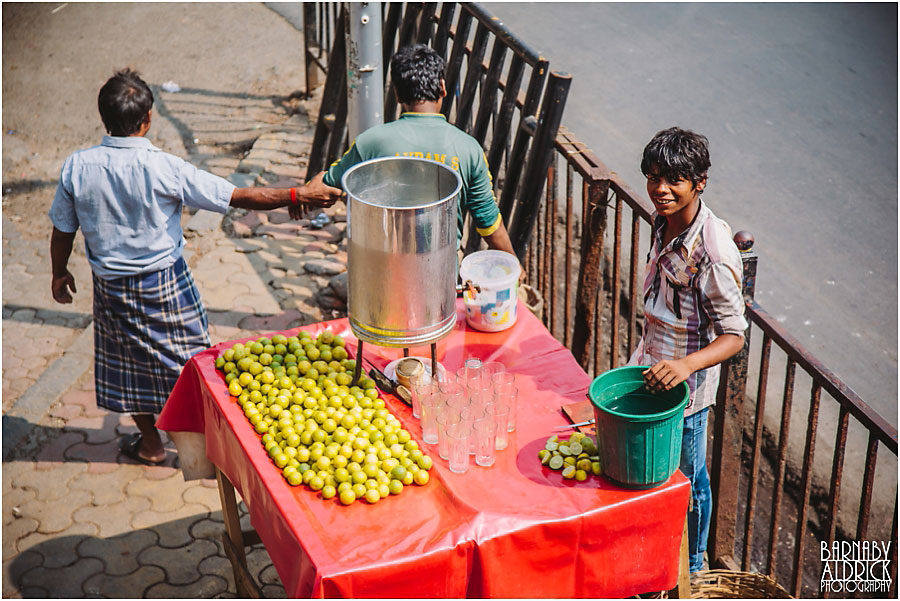
Oranges aren’t always orange outside England. I saw it on QI the other day. We demand them to be orange in England, but they’re usually green or yellow when grown wild.
See what an informative blog this is!?
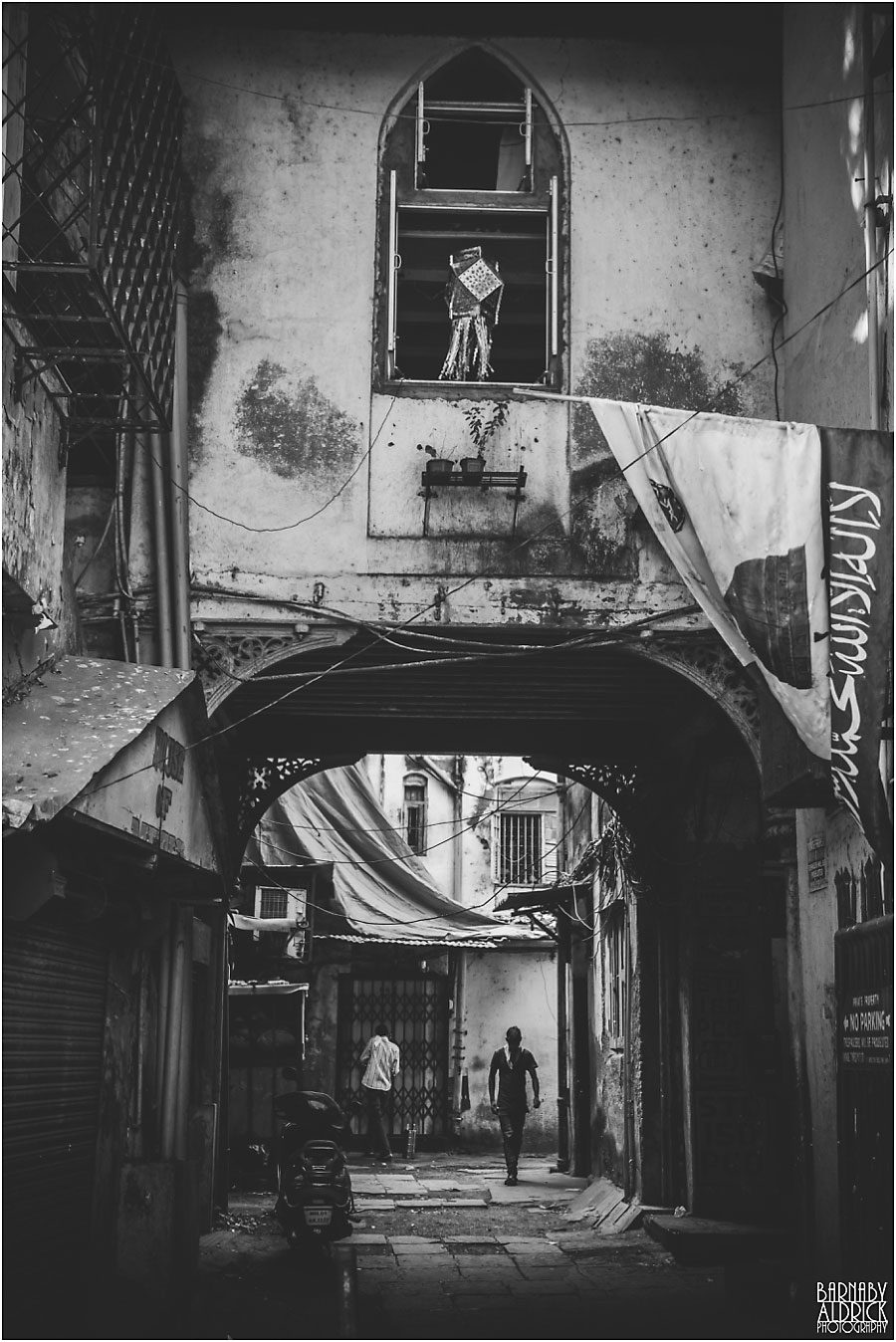
I really like this detail-filled scene of an alley I strolled past.
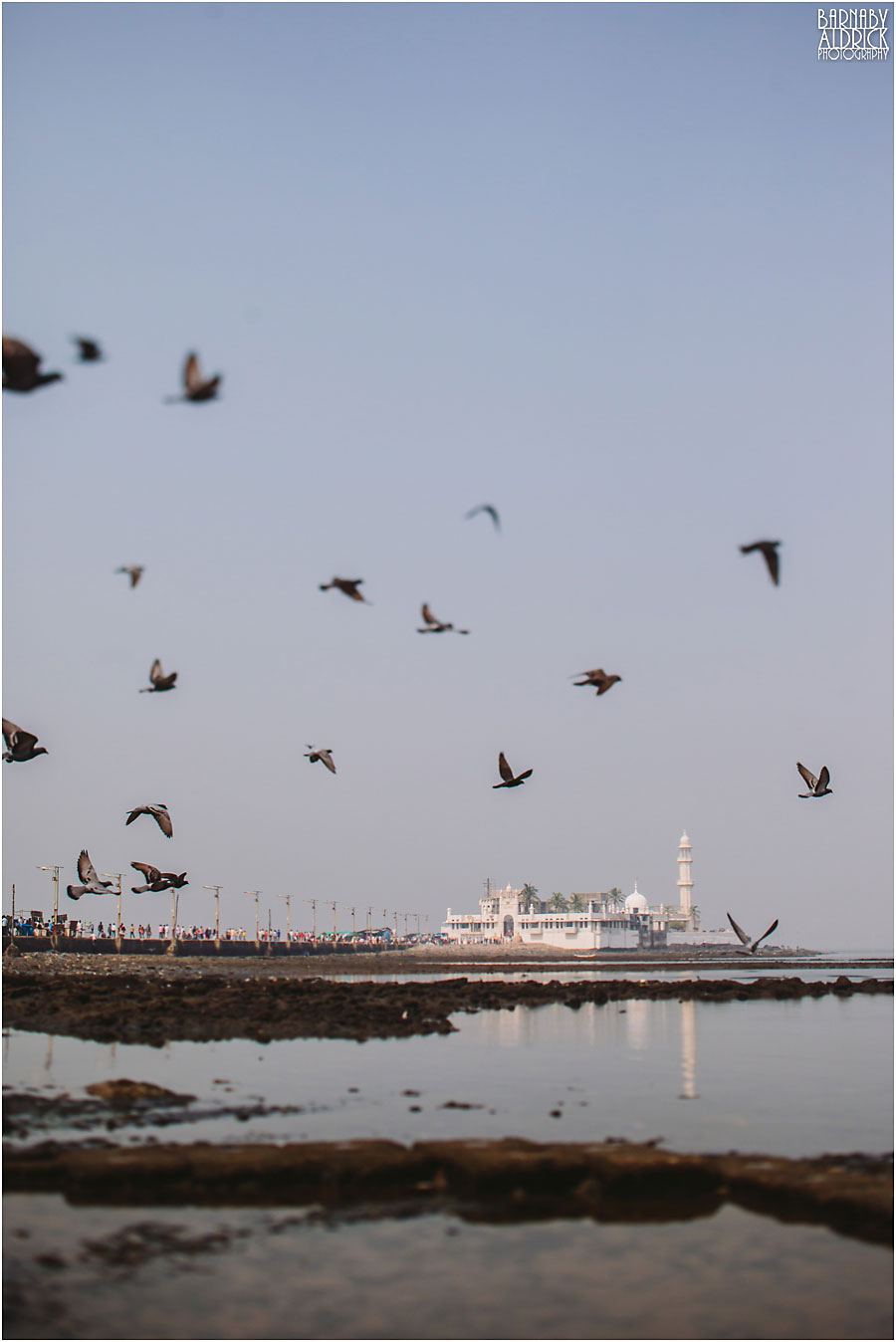
One of the places I visited on my wanders on my first day out was the Haji Ali Dargah floating Mosque.
As the tide was out, I clambered down over the sea wall and rather liked this tilt-shift capture of the passing pigeons.
It smelt a lot like poo where I took this picture.
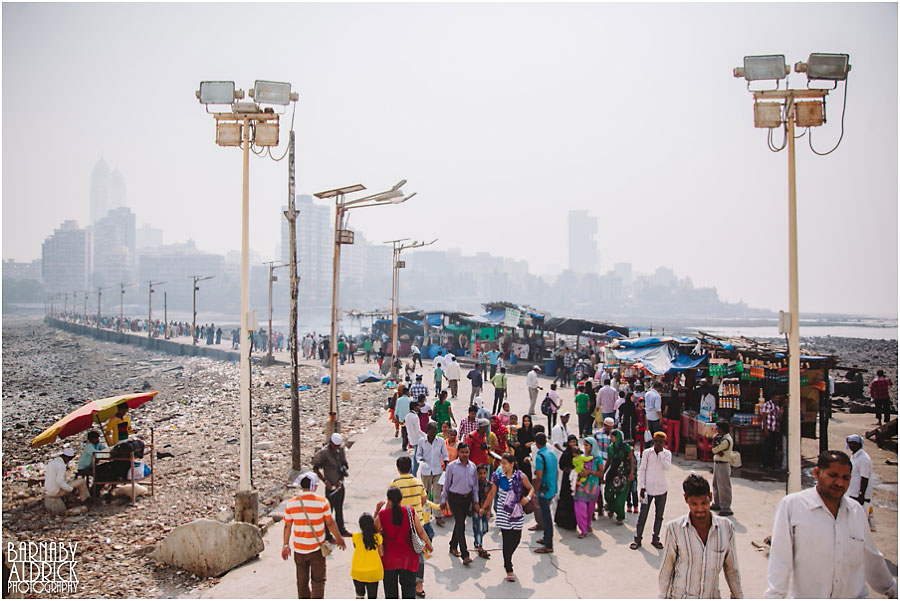
There’s a long walkway packed with hawkers for when the tide’s in.
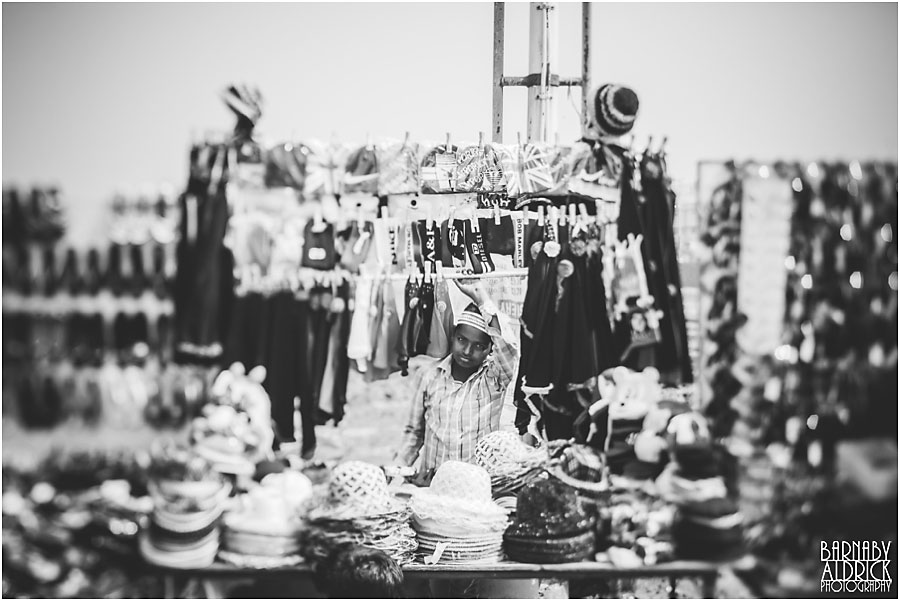
Another tilt shift portrait of a hat seller.
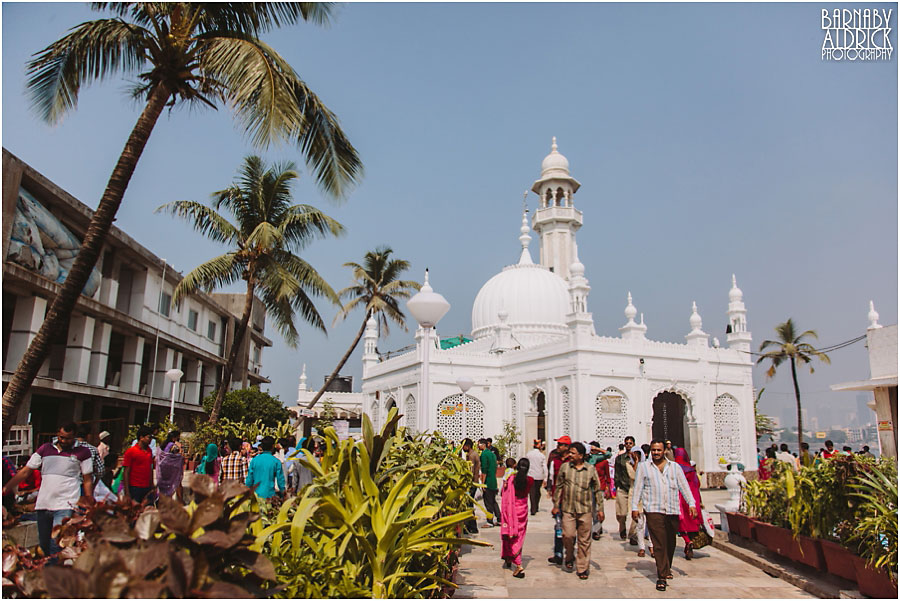

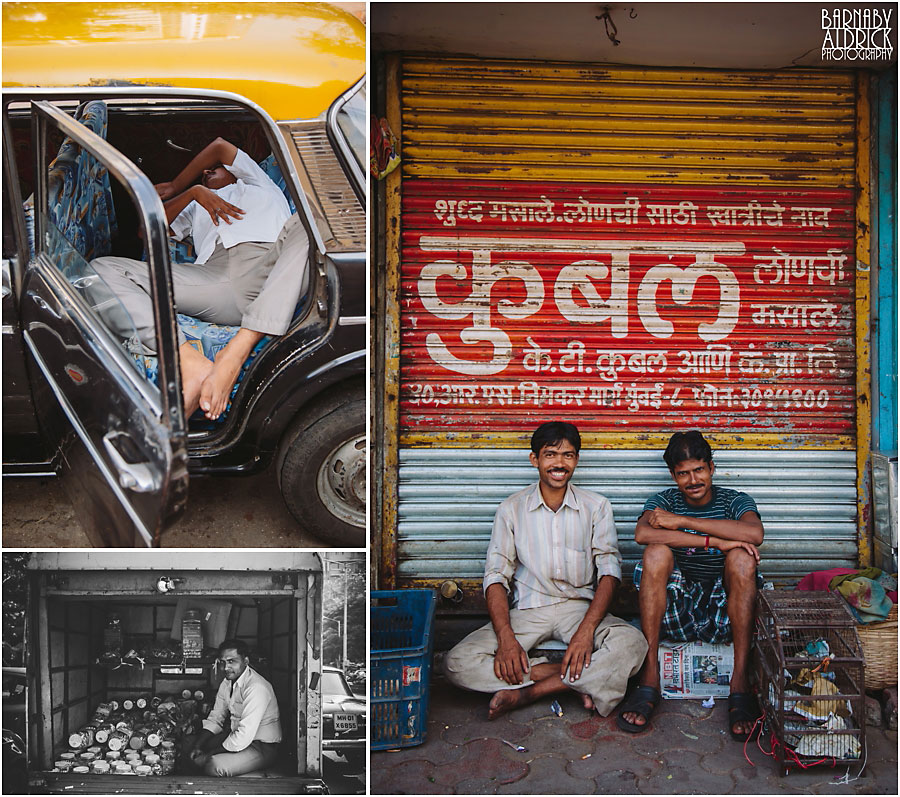
It makes so much difference to be allowed to take peoples photograph. Though I did steal the sleeping chap.
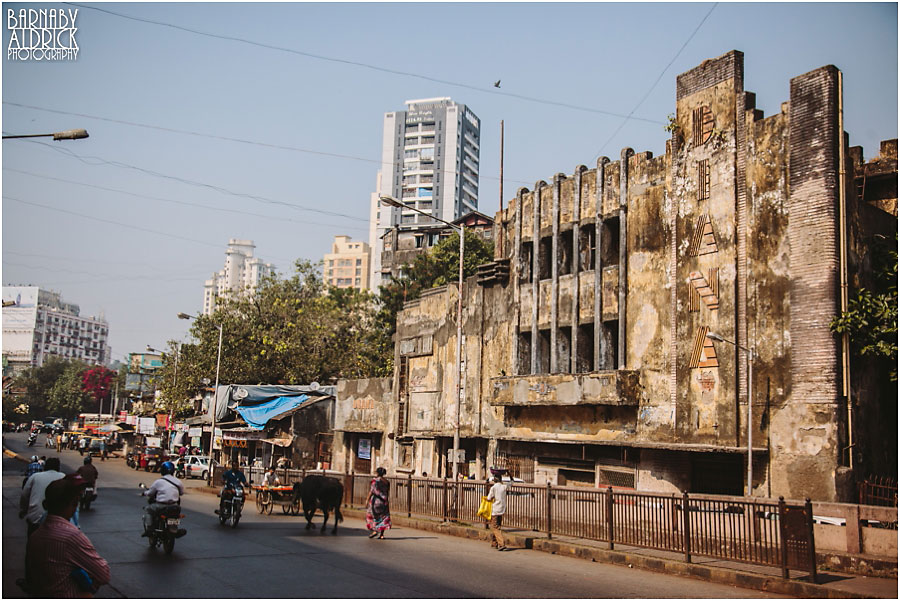
Within the crumbling grander of colonial Mumbai are hidden architectural gems, like this old Art Deco cinema!
It’s quite hard to make out the classic deco lines & curves, but I think it and the ‘Diana’ font work are quite lovely
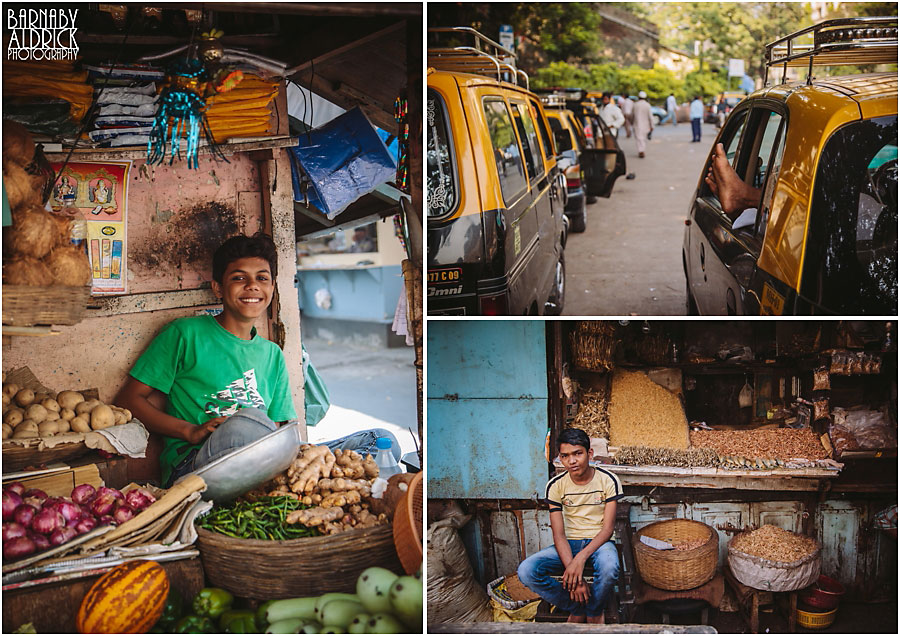
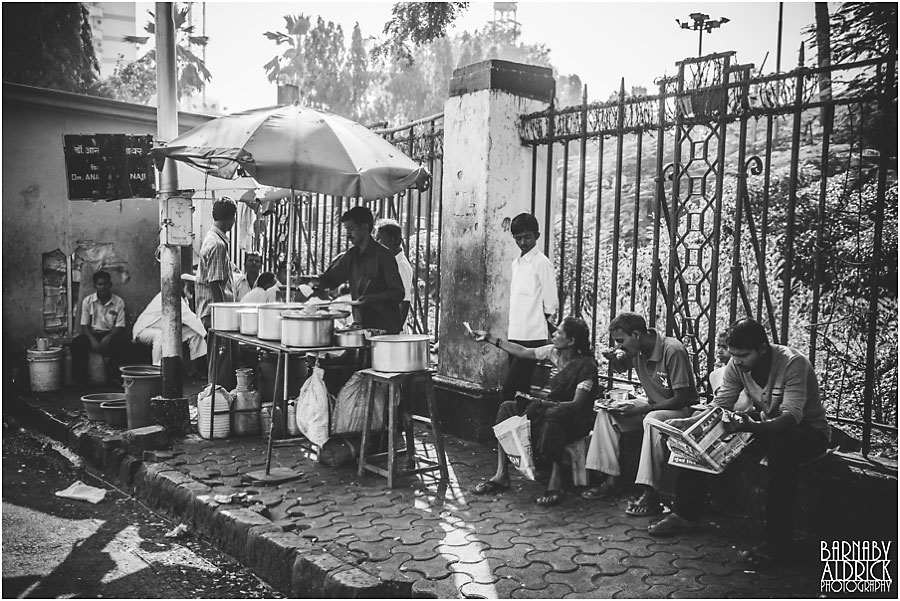
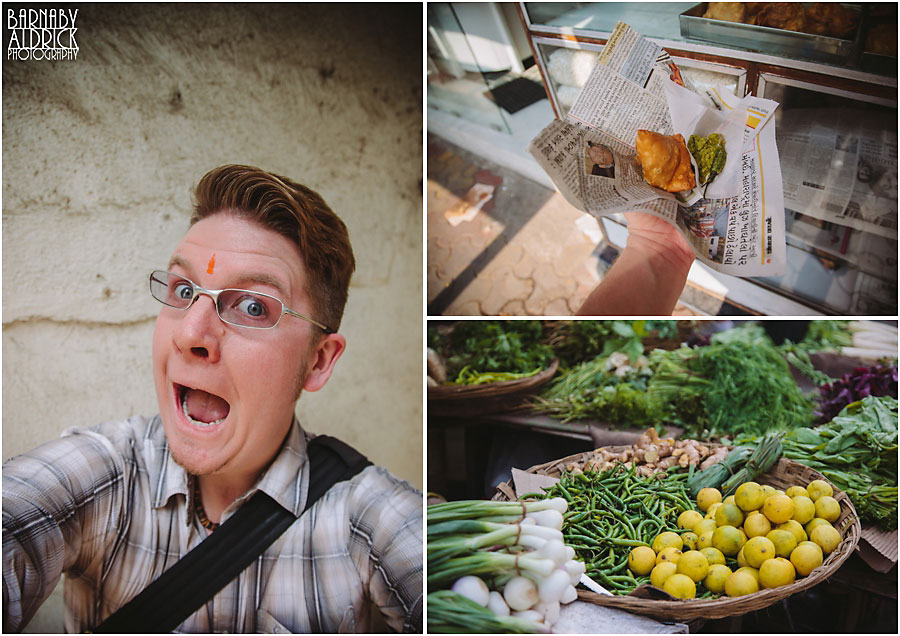
I’m pretty gung-ho with hot streetfood. In my experience, if it’s deep fried, it’s generally less likely to turn the bowels. And even better, Mumbai cuisine is mainly of vegetarian Gujarati origin. It’s often off meat that upsets foreign stomachs.
Then after a biteI popped into a temple and was given a bindi!
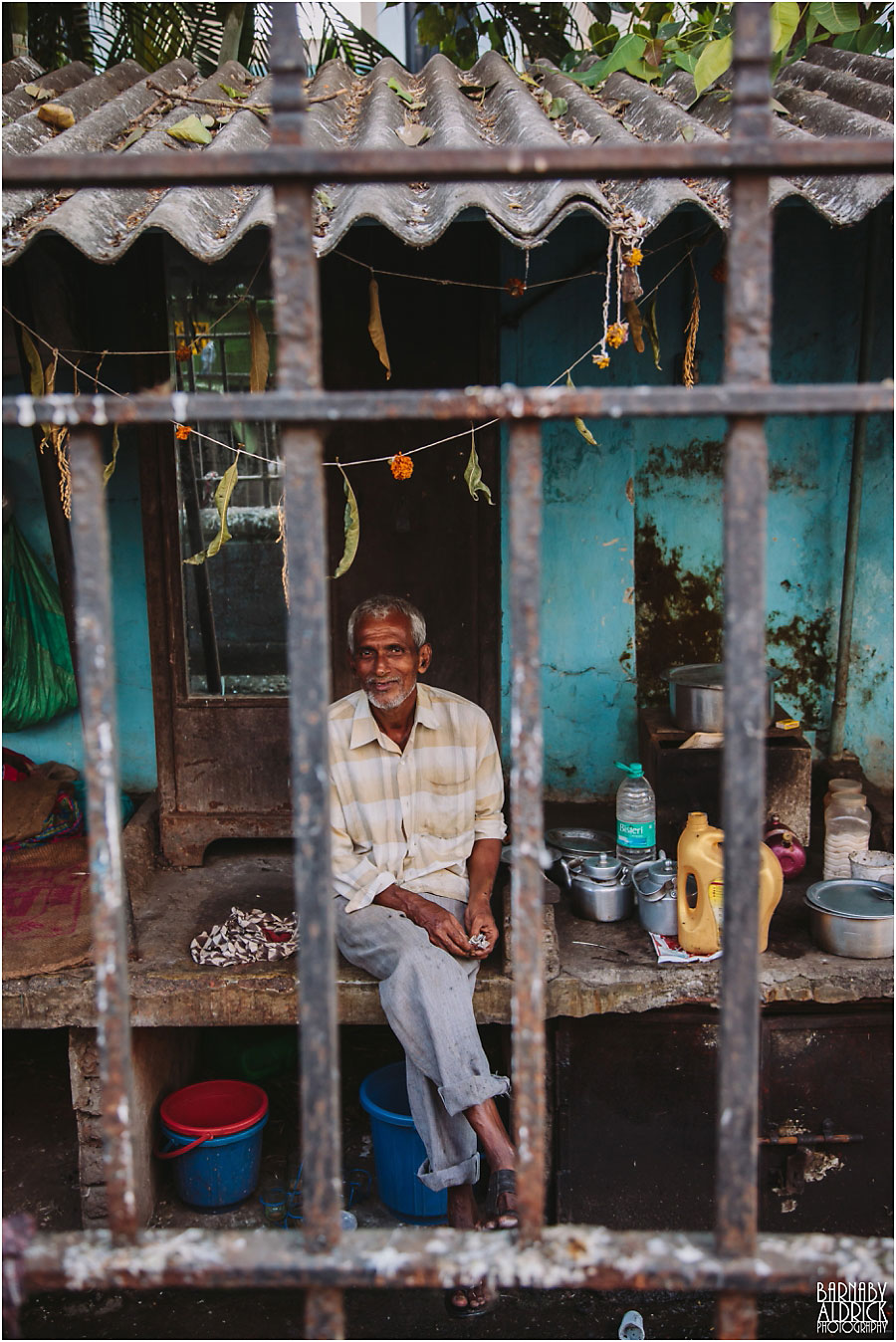
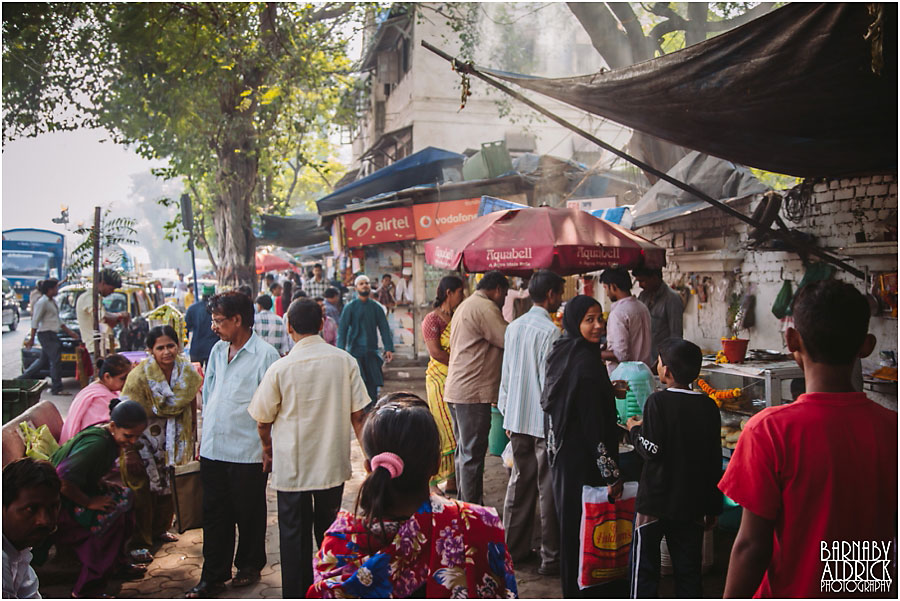
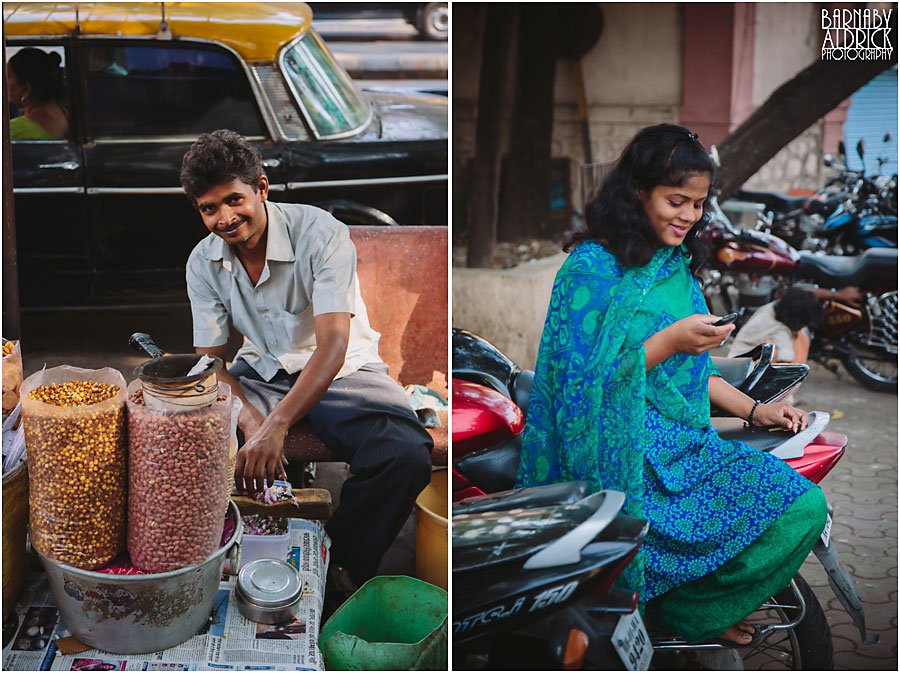
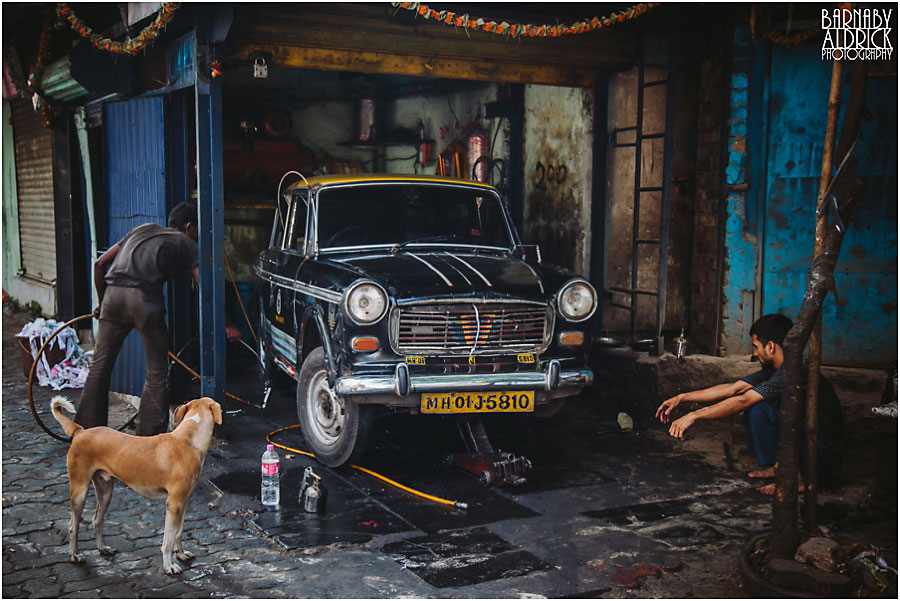
This is one of my faves. I love these old Indian taxis, the inquisitive dog and crumbling textures.
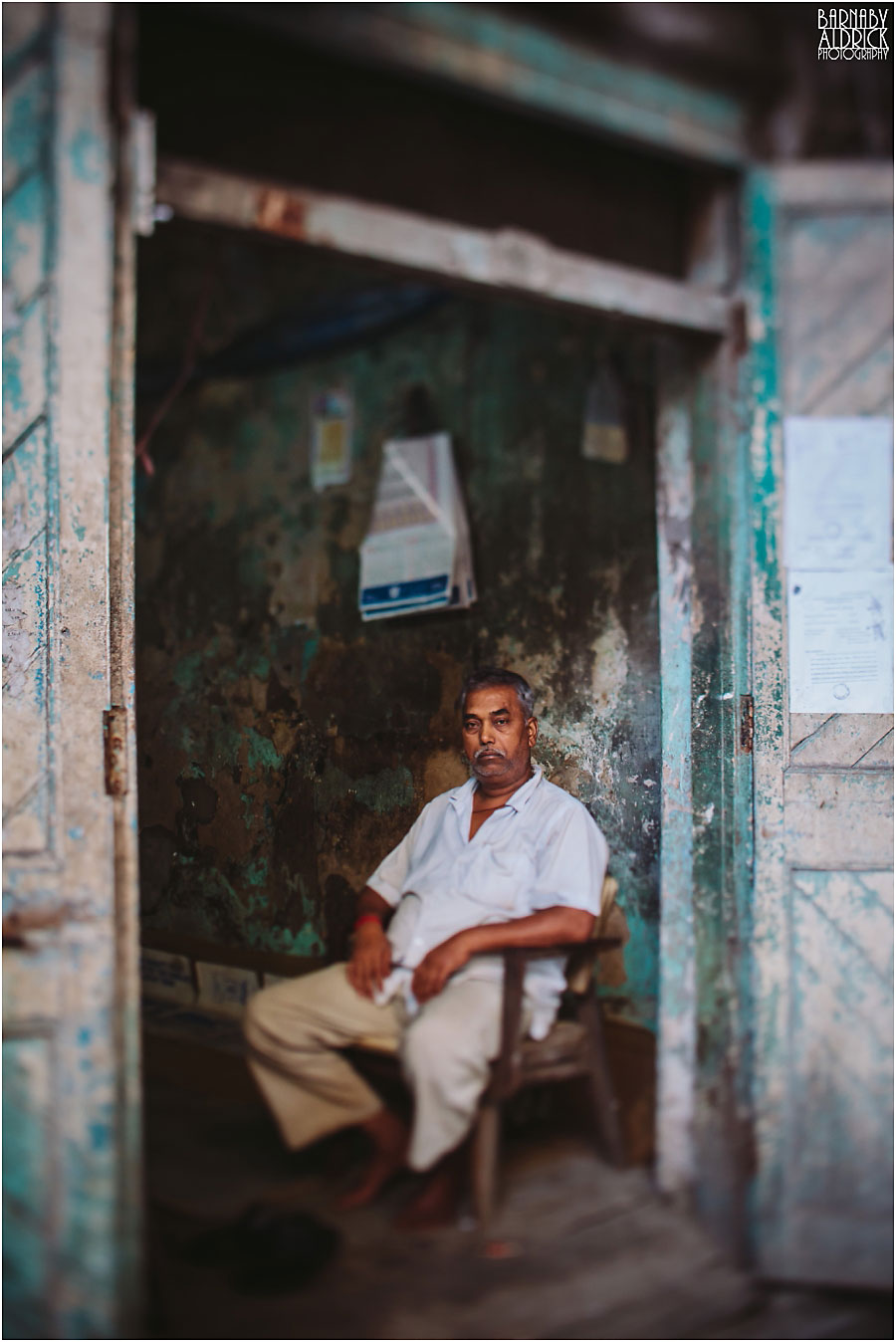
More serious please.
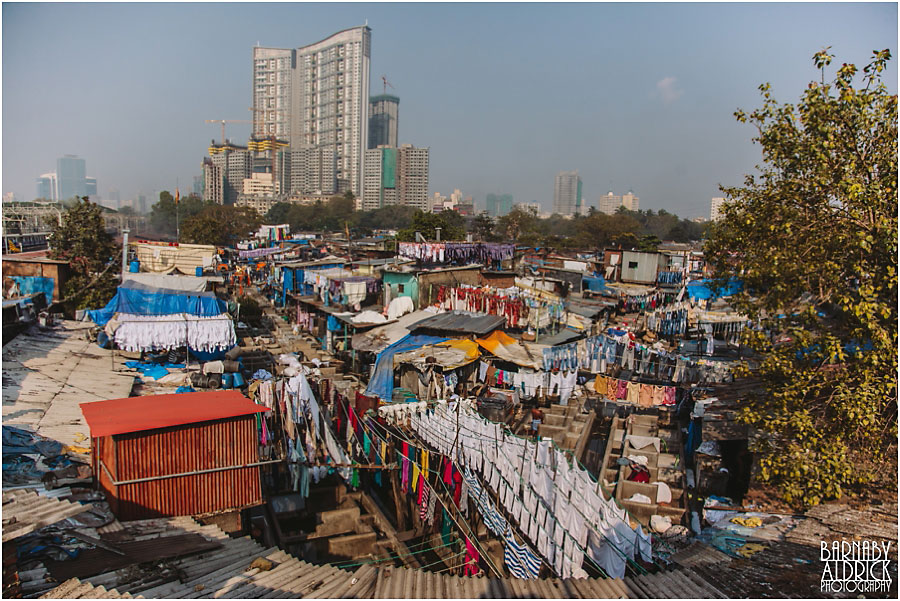
I don’t know if you know, but Slumdog Millionaire was filmed around Mumbai, mainly in the vast Dharavi slums. Part of it was shot in the Mahalaxmi Dhobi Ghat, a mammoth area dedicated to washing Mumbai’s laundry. It was the first popular tourist spot I hit, and was instantly swamped by kids trying to sell me bags & crap, but you can take a tour inside and it’s a fascinating place. Apparently over 5000 people work there, and full families that work there live in tiny little houses around the basins and troughs.
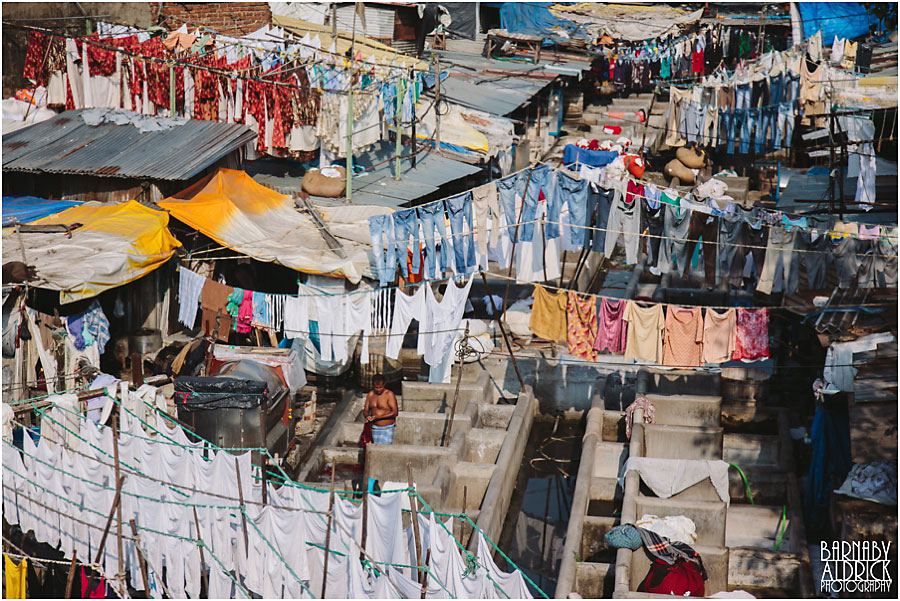
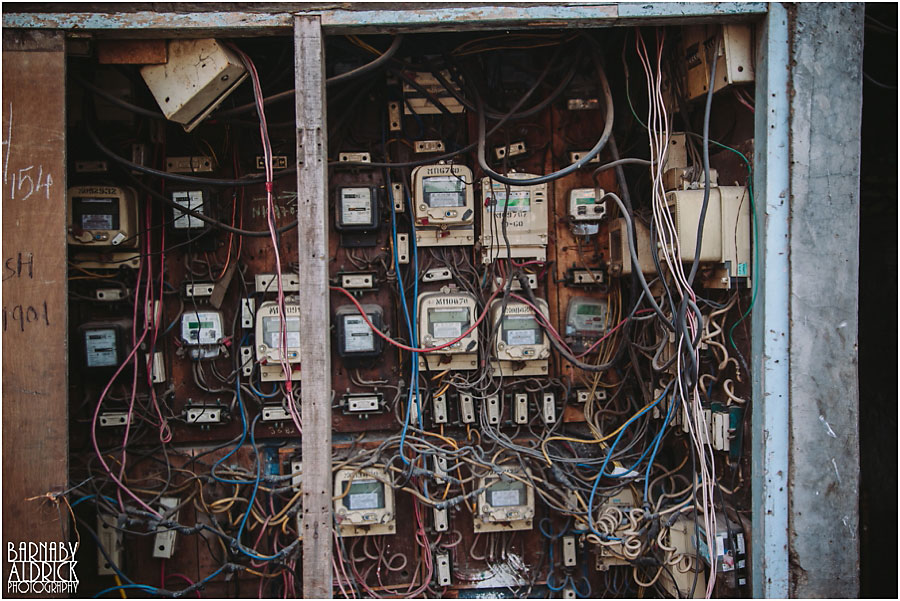
Some special wiring going on there!
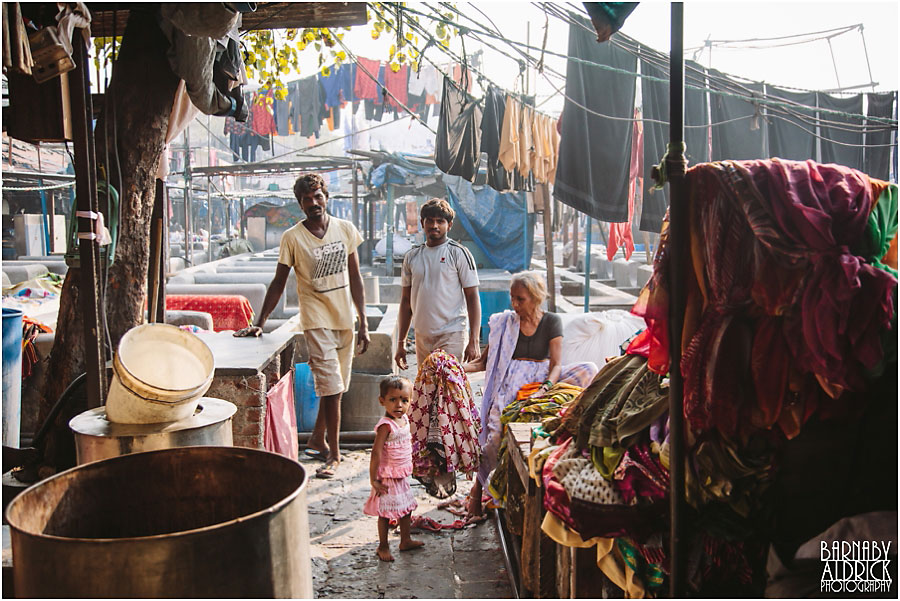
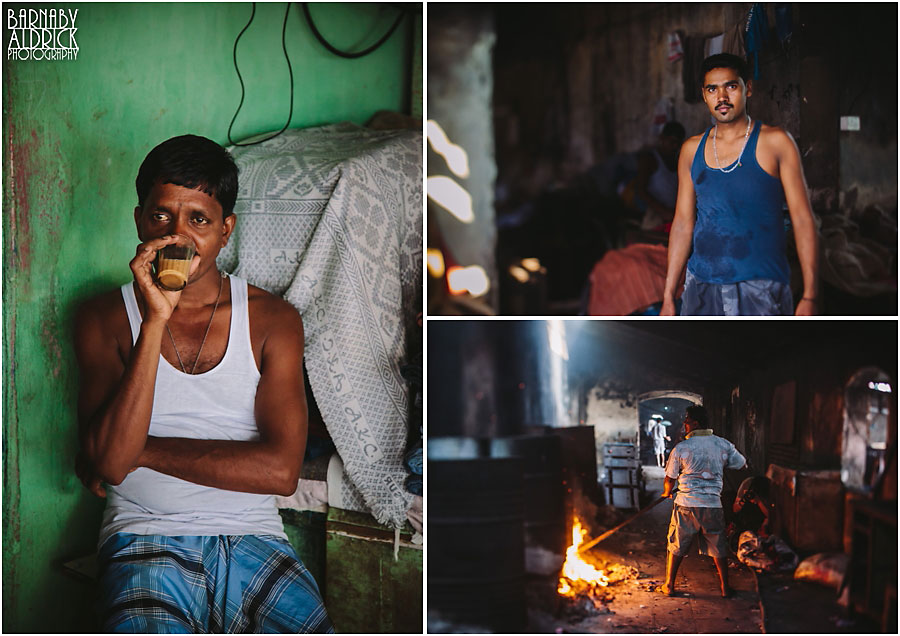
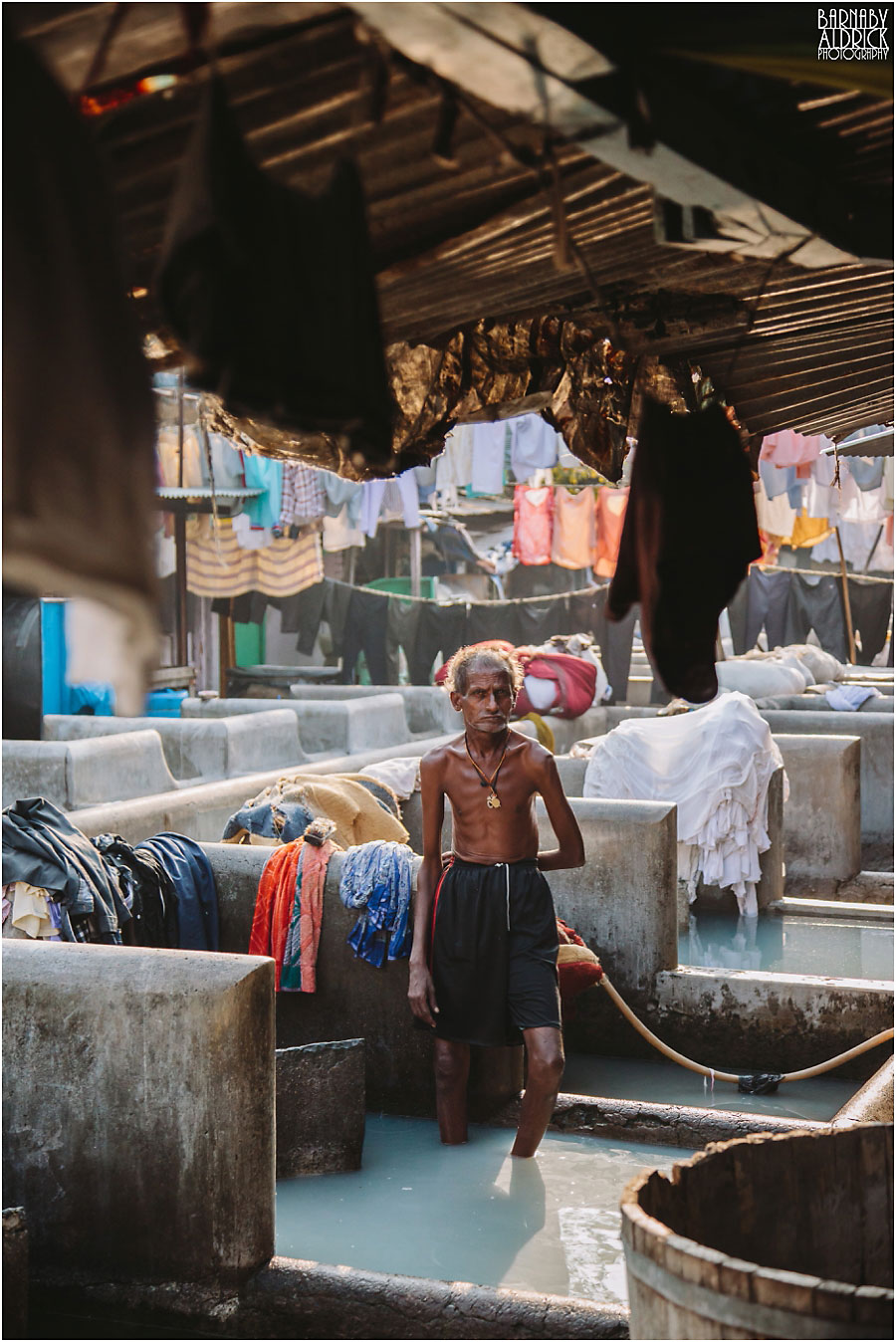
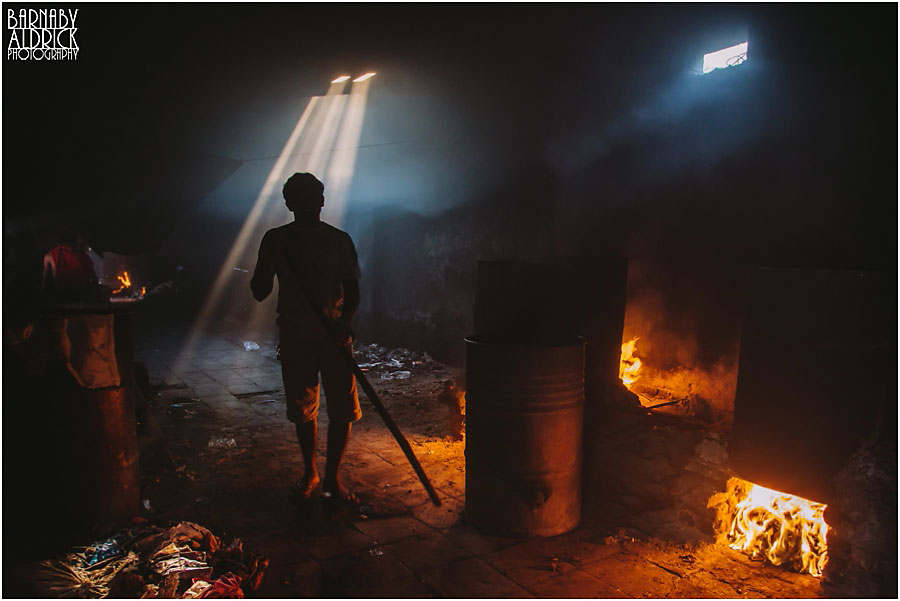
This is probably my favourite shot of the entire trip. I adore the light in the smoke and blue/orange colours, finished magically with the silhouetted man working the fires.
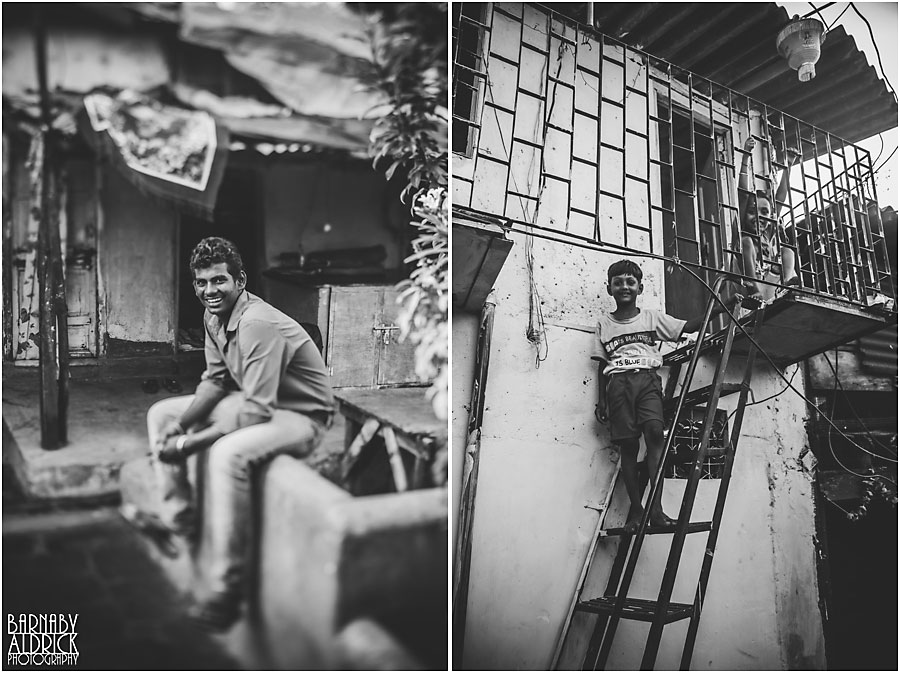
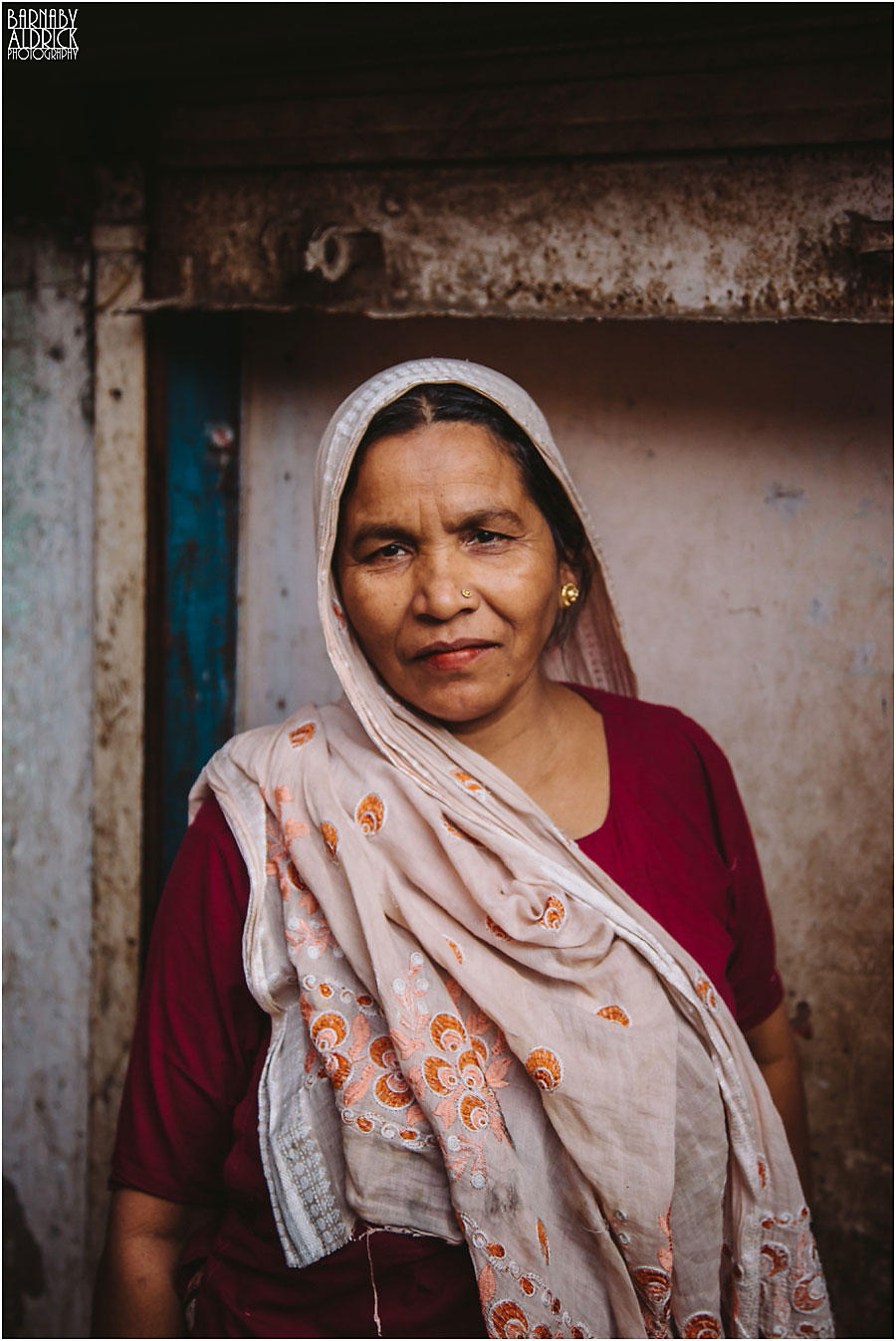
This is a classic 50mm full-frame portrait. My homage to Steve McCurry’s simply breath-taking portraiture of interesting Indian faces.
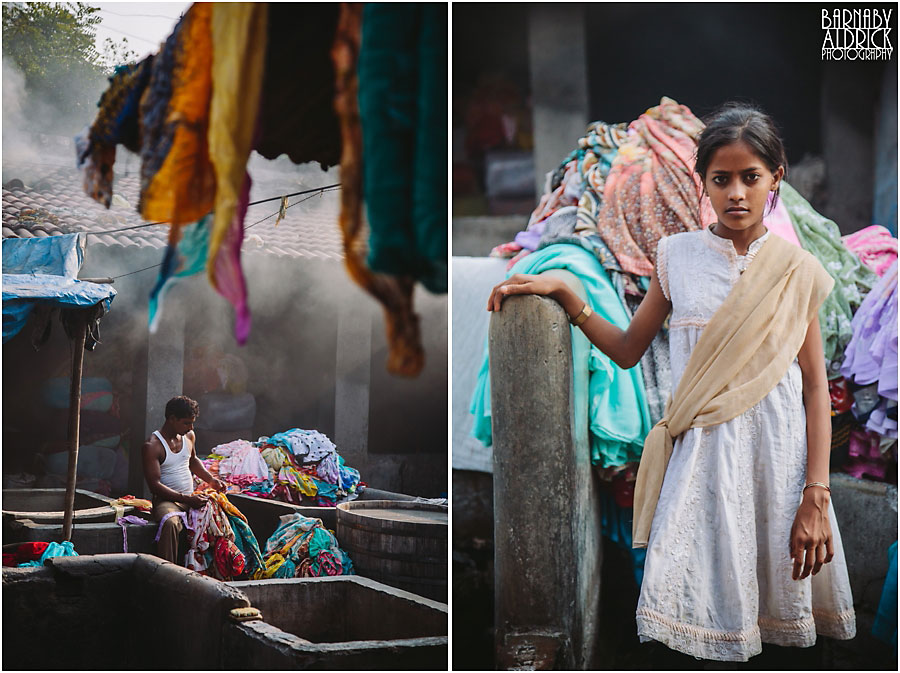
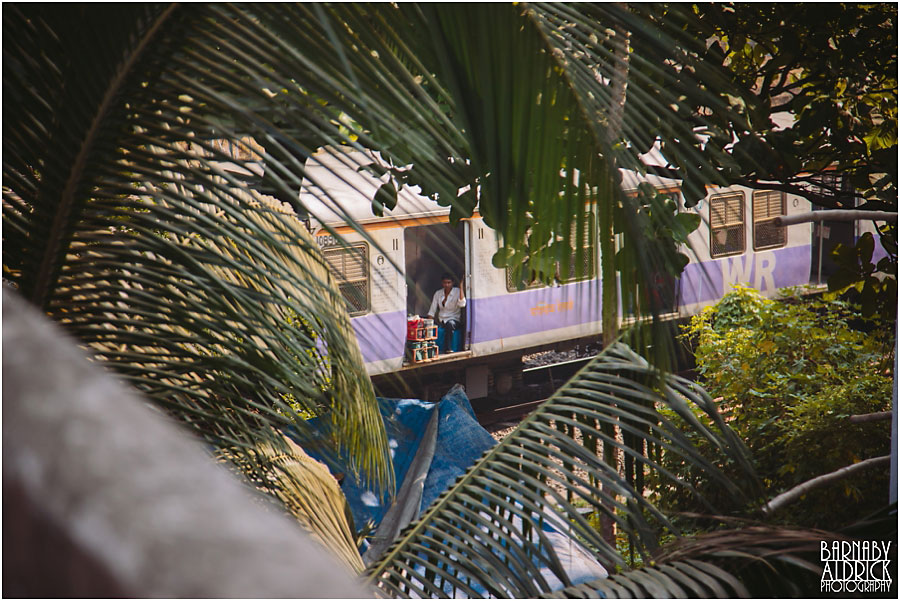
One way to see the real india is to ride a train.
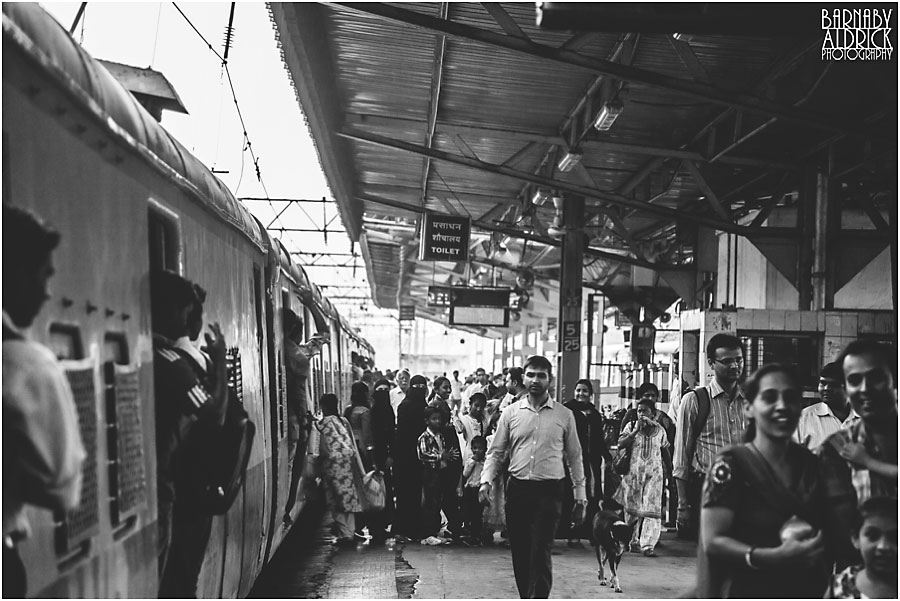
Not many tourists ride the trains locally, especially 2nd class, so it’s a brilliant way to see the real India.
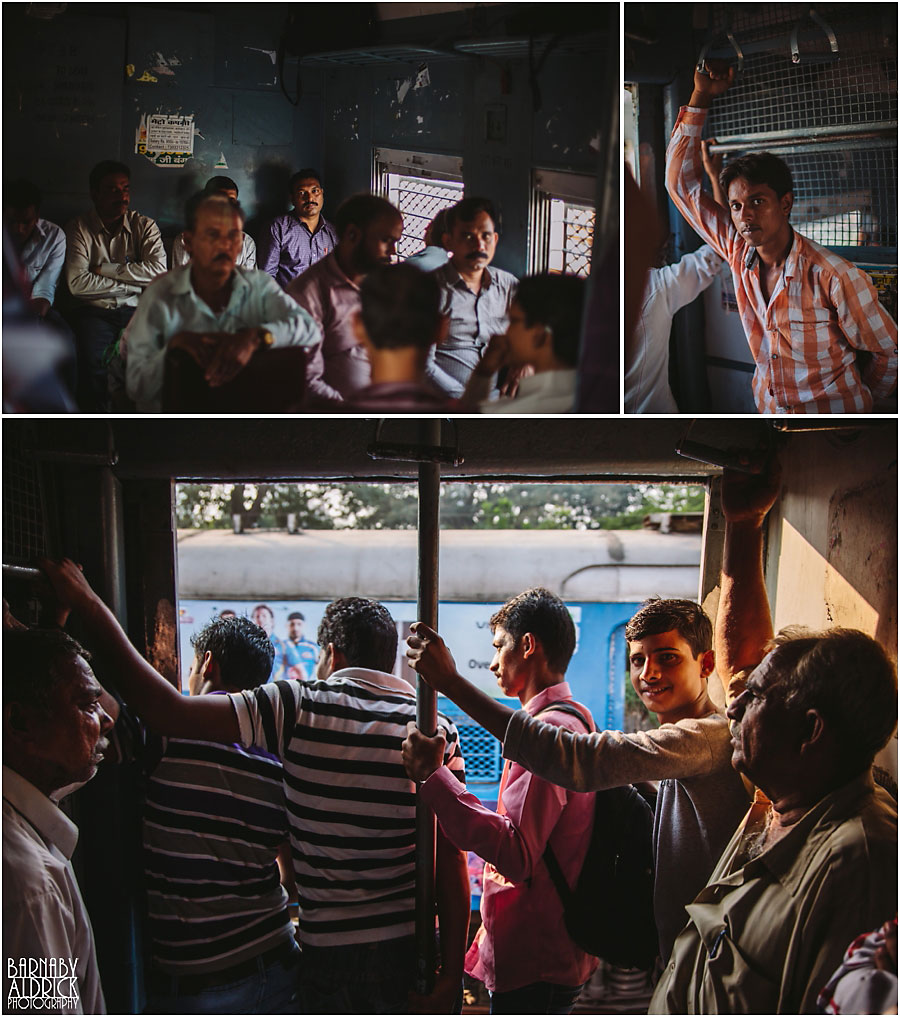
Again, a simple gesture or a nod and everyone is happy to let you take their portrait.
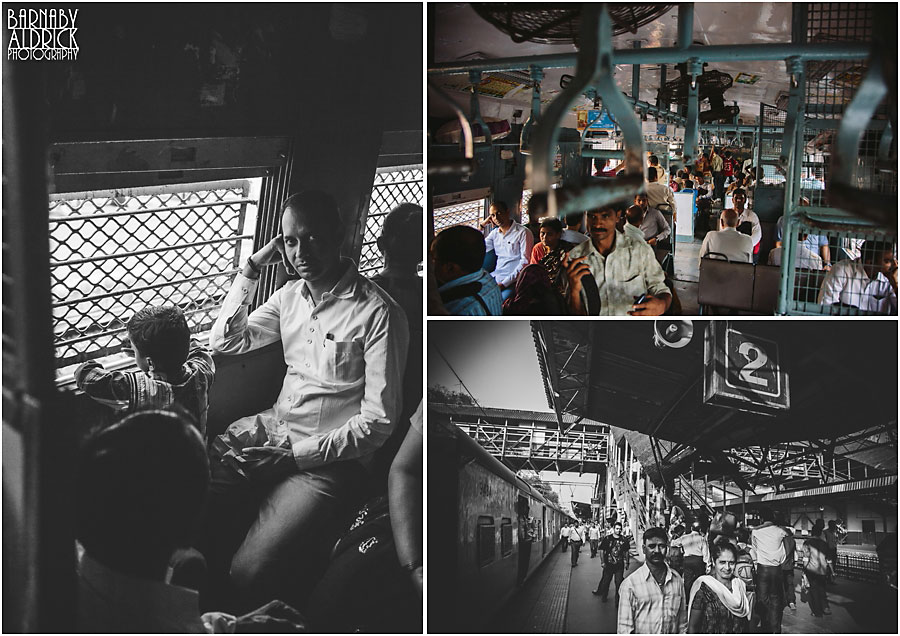
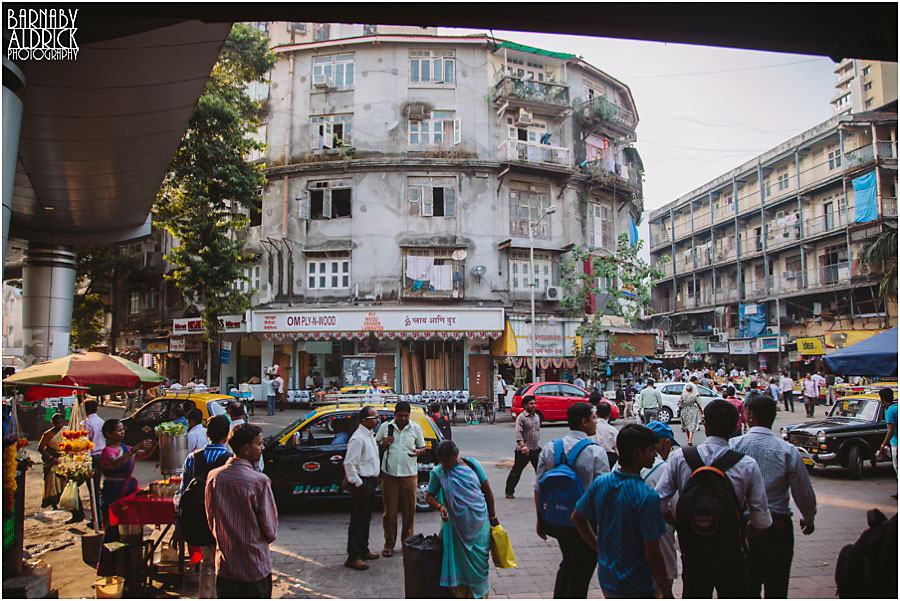
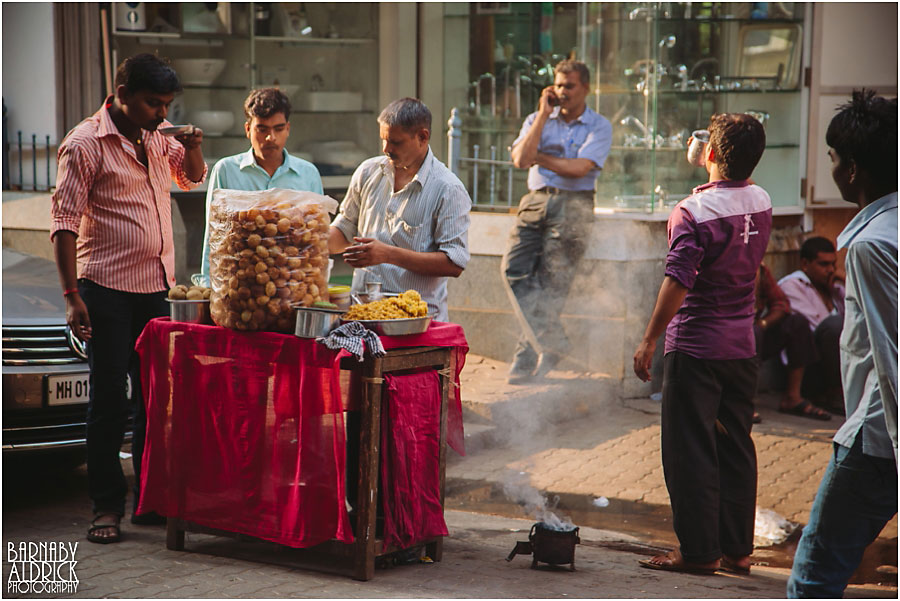
These bhelpuri‘s are a delicious vegi savoury snack. A little crispy puffed rice bite, popped open with the thumb and filled with potatoes, onions & Chat masala.
They’re like 1p each!
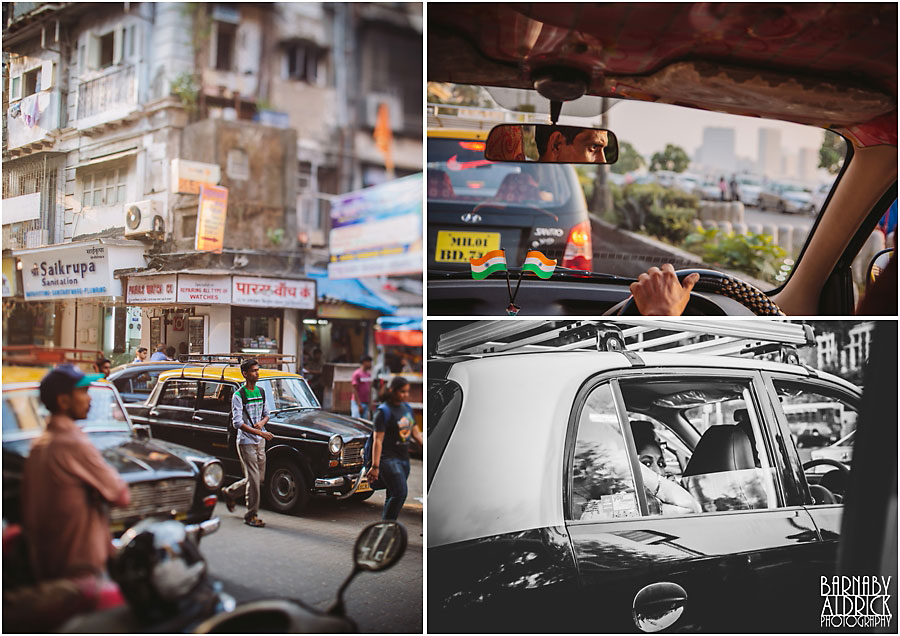
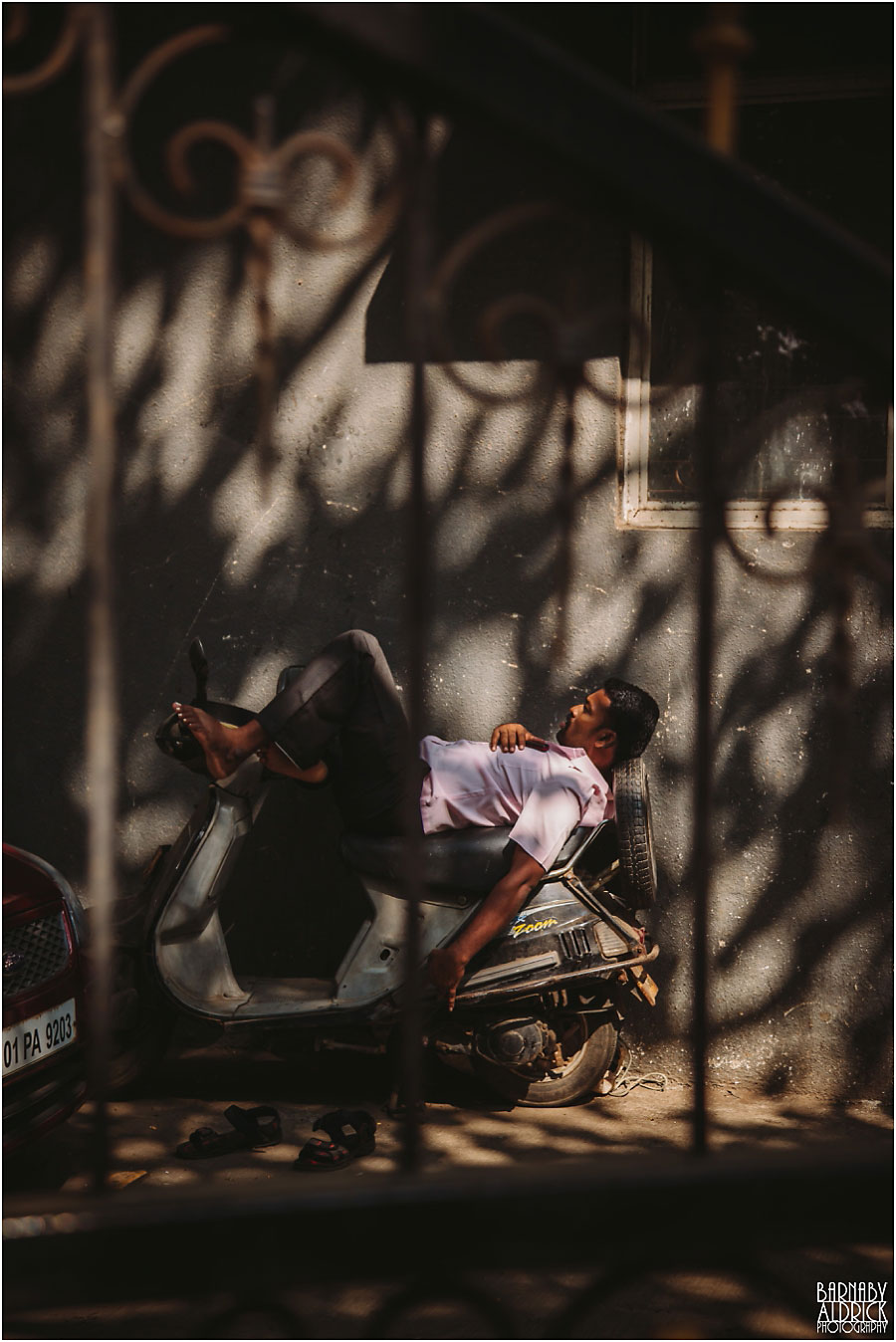
After 2 days pounding the streets through glass, my weary feet needed a rest. Though I could think of better places to put them up than this guy…
You’ll hopefully see I thoroughly enjoyed my wanders around the streets of Bombay. It’s such a bustling mix of ancient culture and chaos under a modern skyline.
A true Indian city.
These two days strolling really relit my love for the country, and I’ve plans to go back again in coming years…
There’s more to see in the pipes! Part two can be seen here – where I do a bit of night photography and head out to see the ancient hand-carved caves of Elephanta Island – and there’s the blog of the wedding itself!
Thanks for reading kids!
B
